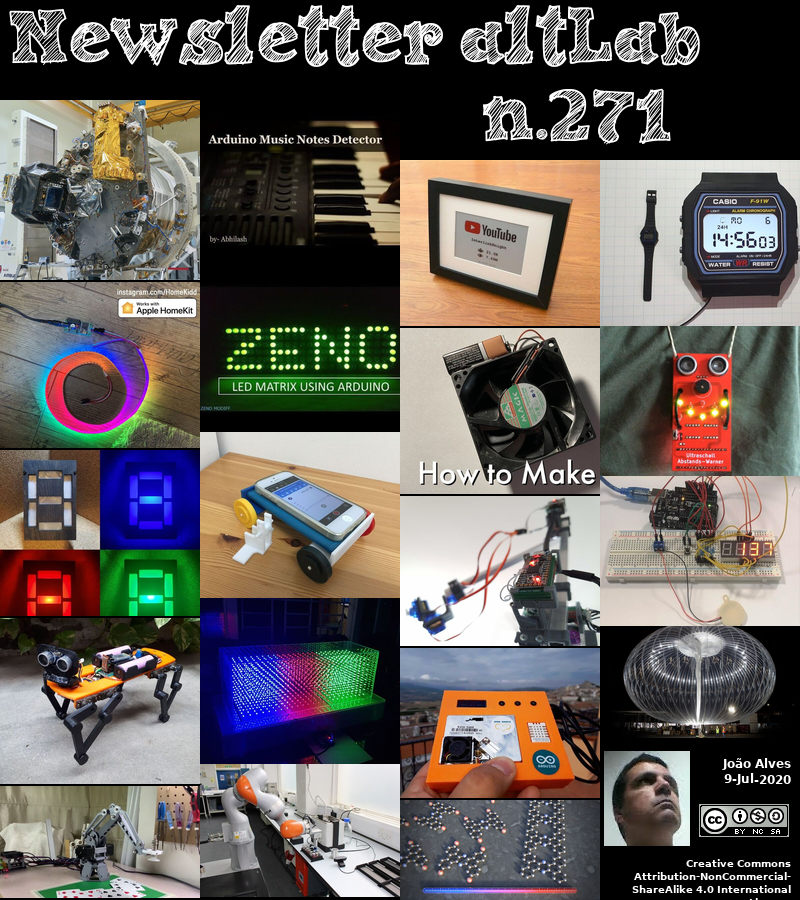2020-07-09 - Nº 271
Editorial
Esta é a Newsletter Nº 271 que se apresenta com o mesmo formato que as anteriores. Se gostar da Newsletter partilhe-a!
Todas as Newsletters encontram-se indexadas no link.
Esta Newsletter tem os seguintes tópicos:
Faz hoje anos que nascia, em 1802, o inventor americano Thomas Davenport. Ele é considerado o inventor do que provavelmente foi o primeiro motor eléctrico comercialmente bem-sucedido, que ele usou com grande talento para alimentar uma série de invenções. Embora vários outros inventores tenham experimentado motores, Davenport foi o primeiro a obter uma patente nos EUA (nº 132 em 25 de Fevereiro de 1837) para seu motor de corrente contínua. Ele incorporou o conceito do electroíman inventado por Joseph Henry de uma maneira que produziu um movimento rotativo usando sua própria ideia de comutador e escovas para controlar a direcção do fluxo da corrente. Ele usou um motor que construiu para alimentar máquinas de oficina e também construiu o primeiro vagão de comboio eléctrico.
Faz também hoje anos que nascia, em 1819 o inventor americano Elias Howe. Ele inventou uma máquina de costura comercialmente bem-sucedida. Embora tenha sido Walter Hunt quem construiu a primeira máquina de costura dos Estados Unidos, ele não a perseguiu. Mais tarde, Howe passou anos a desenvolver um desenho funcional e recebeu uma patente na sua própria máquina em 10 de Setembro de 1846. O sucesso comercial veio lentamente, exigindo a defesa da sua patente contra a melhor máquina comercializada por Isaac Singer.
Faz igualmente hoje anos que nascia, em 1894, o engenheiro e inventor americano Percy Spencer. Ele teve a ideia do forno de micro-ondas. Em 1940, Sir John Randall e o Dr. H. A. Boot inventaram o tubo de magnetron para produzir micro-ondas por radar. Após a guerra, o Dr. Percy Spencer, da Raytheon Company, estava a investigar o tubo de magnetron. Durante uma experiência, ele descobriu que uma barra de chocolate no bolso tinha derretido totalmente. Como o efeito de aquecimento das micro-ondas era conhecido anteriormente, o Dr. Spencer deduziu que a radiação magnetron derretera o chocolate, não o calor do corpo. Isso levou Spencer a pesquisar alimentos para cozinhar. Os primeiros fornos comerciais de micro-ondas eram equipamentos de grande porte, feitos para restaurantes.
Faz também hoje anos que nascia, em 1911, o físico americano John Archibald Wheeler. Ele foi o primeiro físico americano envolvido no desenvolvimento teórico da bomba atómica. Ele também deu origem a uma nova abordagem da teoria do campo unificado. Wheeler recebeu o Prémio Wolf de 1997 "pelas suas contribuições para a física dos buracos negros, a gravidade quântica e as teorias de espalhamento nuclear e fissão nuclear". Depois de reconhecer que qualquer grande colecção de matéria fria não tem escolha a não ser ceder à força da gravidade e sofrer colapso total, Wheeler cunhou o termo "buraco negro" em 1967.
Faz igualmente hoje anos que nascia, em 1926,o Físico americano-dinamarquês Ben Roy Mottelson. Ele partilhou o Prémio Nobel de Física de 1975 com Aage N. Bohr e James Rainwater "pela descoberta da conexão entre movimento colectivo e movimento de partículas nos núcleos atómicos e pelo desenvolvimento da teoria da estrutura do núcleo atómico com base nessa conexão". Este trabalho determinou as formas assimétricas de certos núcleos atómicos e as razões por trás dessas assimetrias. Pesquisas posteriores investigaram o facto de que a matéria nuclear possui propriedades remanescentes dos super-condutores.
Por fim, faz hoje anos que nascia, em 1938, o cientista americano James B. Pollack. Ele foi o investigador da NASA e ajudou a desenvolver a teoria de que a guerra atómica resultaria num "inverno nuclear" como um especialista de renome mundial no estudo de atmosferas e partículas planetárias usando técnicas de transferência radioactiva. Noutro trabalho, ele examinou as mudanças climáticas evolutivas em todos os planetas terrestres e modelos detalhados da evolução inicial dos planetas gigantes de gás. Ele fez contribuições fundamentais para o desenho de várias missões da NASA. Pollack descobriu a primeira evidência real de que as nuvens de Vénus são compostas de ácido sulfúrico. Ele explicou a razão do paradoxo dos anéis de Saturno mostrarem baixa emissividade de micro-ondas, mas alta reflectividade de radar.
Nesta semana que passou, a missão da Rocket Lab não conseguiu atingir a órbita tendo falhado. Após uma descolagem bem-sucedida, passagem do primeiro estágio e separação do estágio, o Rocket Lab teve uma anomalia durante a sua 13ª missão Electron: ‘Pics Or It Didn’t Happen.’ O problema ocorreu aproximadamente quatro minutos após o lançamento a 4 de Julho de 2020 e resultou na perda do foguetão. Como resultado, a carga a bordo do Electron não foi colocada em órbita. O Electron permaneceu dentro das zonas estabelecidas para a missão e não causou danos ao pessoal ou ao local de lançamento. O Rocket Lab está a trabalhar em estreita colaboração com a FAA para investigar a anomalia e identificar a raiz do problema para o corrigir e avançar.
Também esta semana ficámos a saber que os balões Loon da Alphabet começaram a oferecer o seu primeiro serviço comercial de Internet no Quénia. Num post no blog anunciando a notícia, o CEO da Loon, Alastair Westgarth, disse que o serviço 4G LTE será fornecido aos assinantes da Telkom Kenya através de uma frota de cerca de 35 balões, cobrindo uma área de cerca de 50.000 quilómetros quadrados nas áreas oeste e central do país, incluindo sua capital, Nairobi.
Na Newsletter desta semana apresentamos diversas noticias, artigos científicos assim como projetos de maker. É apresentado o livro "Building Secure & Reliable Systems".
 João Alves ([email protected])
João Alves ([email protected])
O conteúdo da Newsletter encontra-se sob a licença  Creative Commons Attribution-NonCommercial-ShareAlike 4.0 International License.
Creative Commons Attribution-NonCommercial-ShareAlike 4.0 International License.
Novidades da Semana
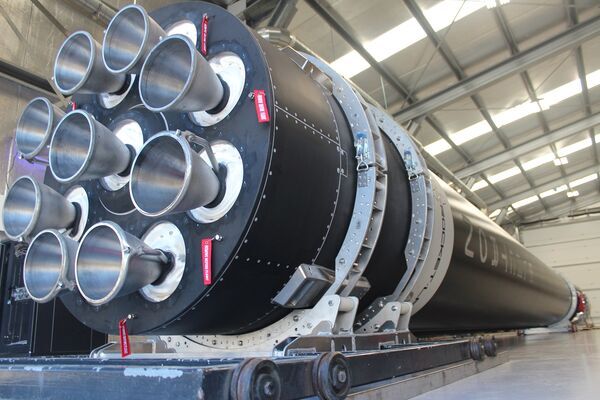
Rocket Lab Mission Fails to Reach Orbit
"Following a successful lift-off, first stage burn, and stage separation, Rocket Lab experienced an anomaly during its 13th Electron mission ‘Pics Or It Didn’t Happen.’ The issue occurred approximately four minutes into the flight on July 4, 2020 and resulted in the safe loss of the vehicle. As a result, the payloads onboard Electron were not deployed to orbit. Electron remained within the predicted launch corridors and caused no harm to personnel or the launch site. Rocket Lab is working closely with the FAA to investigate the anomaly and identify its root cause to correct the issue to move forward. “We are deeply sorry to our customers Spaceflight Inc., Canon Electronics Inc., Planet, and In-Space Missions for the loss of their payloads. We know many people poured their hearts and souls into those spacecraft." [...]
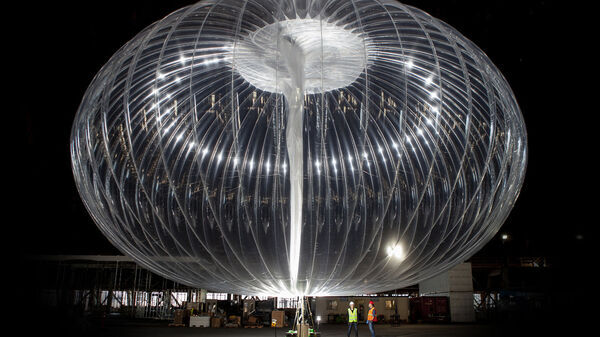
Alphabet’s Loon balloons provide their first commercial internet service in Kenya
"A 35-balloon fleet will provide internet across 50,000 square kilometers Alphabet’s Loon division, which uses floating balloons to provide internet, has today launched its first commercial service in Kenya. In a blog post announcing the news, Loon’s CEO Alastair Westgarth said that the 4G LTE service will be provided to Telkom Kenya subscribers via a fleet of around 35 balloons, covering an area of around 50,000 square kilometers across western and central areas of the country, including its capital, Nairobi. It’s a significant step for Loon, which started as a moonshot project in Alphabet’s X division before being spun out into its own company in 2018. The company’s balloons have already provided internet connectivity in the wake of disasters, like in Puerto Rico in 2017 after Hurricane Maria or in Peru after an earthquake in 2019, but never as part of a large-scale commercial deployment. Loon has been testing its balloons in Kenya for several months now, and it says that in that time, it’s already connected 35,000 unique users to the internet, “although most didn’t realize it.” The company says that it achieved a downlink speed of 18.9Mbps back in June, along with an uplink speed of 4.74Mbps and a latency of 19ms, and that it’s tested a range of services — including email, voice and video calls, web browsing, WhatsApp, and YouTube viewing — on its service. The company’s balloons (or “flight vehicles” as it calls them) hover at a height of roughly 20 km, analyzing the weather to ride around on stratospheric winds." [...]
Outras Notícias

New keyboards for Portugal, Norway, Sweden, and Denmark
"It feels like just yesterday that we released the Raspberry Pi keyboard and hub to the world. Well, it turns out it’s been more than a year, and time really has flown for the next stage of this project, which brings four new language/country options: Portugal, Norway, Sweden, and Denmark. They’re available to buy now from Raspberry Pi Approved Resellers. Raspberry Pi keyboards The keyboard and hub has been a great success, with many users adopting our Raspberry Pi red and white colour scheme for their setup. As well as this satisfying uptake of the keyboard on its own, we’ve also sold tens of thousands of Raspberry Pi Desktop Kits which include a keyboard, alongside the official mouse, Beginners Guide and, of course, a Raspberry Pi. We made the black and grey set up for users who own a black and grey Raspberry Pi case, but, with four out of five people choosing the red and white variant, it just goes to show what a bit of company branding can do for business!" [...]

Proba-V passes the torch
"ESA’s cubic-metre-sized Proba-V minisatellite, seen left, has ended its seven-year global mission to monitor the daily growth of all Earth’s vegetation, a task being taken up by Copernicus Sentinel-3 instead, seen right. Proba-V was launched in 2013 to fill a gap in global vegetation monitoring between the end of France’s Spot satellites and Copernicus Sentinel-3. Its compact Vegetation instrument has a 2250-km wide continent-scale field of view, allowing it to image all Earth’s vegetation in just over a single day. Overall, the mission has acquired more than a petabyte of environmental data during its time in orbit, which was processed and distributed to users by VITO, the Belgian research and service centre. Its observing mission having ended at the end of June, Proba-V will now to free to perform experimental monitoring over Europe and Africa – including co-observations with new companion missions. " [...]
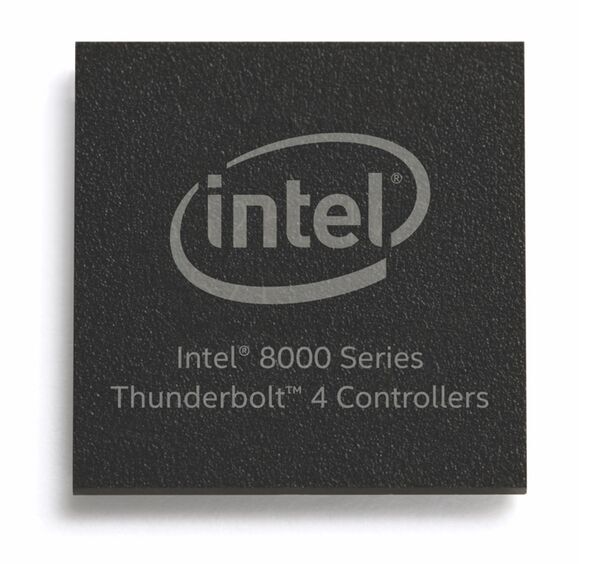
Introducing Thunderbolt 4: Universal Cable Connectivity for Everyone
"Today, Intel revealed new details about Thunderbolt™ 4, the next generation of its universal cable connectivity solution, delivering increased minimum performance requirements, expanded capabilities and USB4 specification compliance. For the first time, Thunderbolt 4 will offer docks with up to four Thunderbolt ports and universal cables up to 2 meters in length. Intel’s upcoming mobile PC processors, code-named “Tiger Lake,” will be the first to integrate Thunderbolt 4. Intel also announced the Thunderbolt 4 controller 8000 series, compatible with the hundreds of millions of Thunderbolt 3 PCs and accessories already available. Thunderbolt 4 developer kits and certification testing are now available. “Thunderbolt provides consumers with a leading connectivity standard across a range of devices, helping to advance computing experiences and delivering on the promise of USB-C with simplicity, performance and reliability." [...]
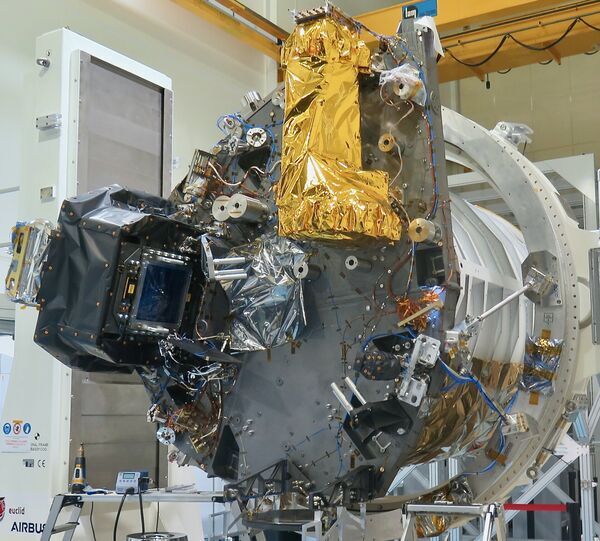
The Euclid space telescope is coming together
"ESA’s Euclid mission has reached another milestone on its journey towards launch. Its two instruments are now built and fully tested. These have been delivered to Airbus Defence and Space in Toulouse, France, where they are now being integrated with the telescope to form the mission’s payload module. Euclid consists of a 1.2-metre mirror telescope that is designed to work at both visible and near-infrared wavelengths – the latter being just longer than the red light humans can see. The telescope will collect light from distant cosmic objects and feed it into two instruments. The Visible instrument (VIS) and the Near Infrared Spectrometer and Photometer (NISP) will run in parallel, recording data simultaneously from whatever portion of the sky the telescope is pointed at." [...]
Ciência e Tecnologia

Research reflects how AI sees through the looking glass
"Things are different on the other side of the mirror. Text is backward. Clocks run counterclockwise. Cars drive on the wrong side of the road. Right hands become left hands. Intrigued by how reflection changes images in subtle and not-so-subtle ways, a team of Cornell researchers used artificial intelligence to investigate what sets originals apart from their reflections." [...]
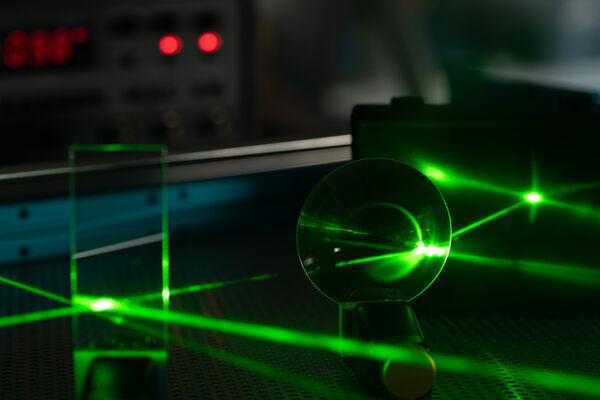
Towards Lasers Powerful Enough to Investigate a New Kind of Physics
"In a paper that made the cover of the journal Applied Physics Letters, an international team of researchers has demonstrated an innovative technique for increasing the intensity of lasers. This approach, based on the compression of light pulses, would make it possible to reach a threshold intensity for a new type of physics that has never been explored before: quantum electrodynamics phenomena. Since the invention of frequency drift amplification in 1985 by Donna Strickland and Gérard Mourou, laser power has increased phenomenally, to finally reach a limit in the last years. Many research groups are amplifying the energy of the laser to increase its power, but this approach is expensive and requires beams and optics that are very large, more than a metre in size. Researchers Jean-Claude Kieffer of the Institut national de la recherche scientifique (INRS), E. A. Khazanov of the Institute of Applied Physics of the Russian Academy of Sciences and Gérard Mourou, Professor Emeritus of the Ecole Polytechnique in France, who was awarded the Nobel Prize in Physics in 2018, have chosen another direction to achieve an intensity of around 10^23 W/cm². Rather than increasing the energy of the laser, they decrease the pulse duration to only a few femtoseconds." [...]
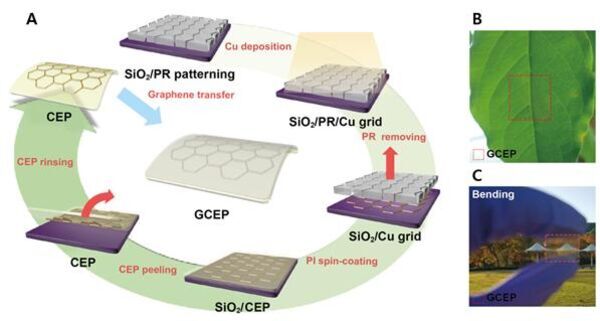
Enhancing the Performance of PSCs with ‘Graphene Armor’
"A research team, led by Professor Hyesung Park in the School of Energy and Chemical Engineering at UNIST has unveiled a flexible metal grid-based hybrid electrode platform by using a Cu grid-embedded polyimide (CEP) film with a graphene sheet as the protection layer, named GCEP. A team of researchers, affiliated with UNIST has come up with a novel electrode that could greatly improve the stability of perovskite solar cells (PSCs), the most promising candidate for the next generation solar cells due to their low cost and high power conversion efficiency. This is because inserting a protection layer between the metal-based electrode and the perovskite film can prevent metal-induced degradation and that graphene, as such a layer, can effectively suppress the diffusion of metals and halide ions. This breakthrough has been led by Professor Hyesung Park and his research team in the School of Energy and Chemical Engineering at UNIST. In their work, the research team developed a flexible metal grid-based hybrid electrode platform by using a Cu grid-embedded polyimide (CEP) film with a graphene sheet as the protection layer, named GCEP, which exhibited high electrical conductivity, excellent chemical stability, and mechanical durability. Through this, they demonstrated the critical role of graphene as a protection layer to prevent metal-induced degradation and halide diffusion between the electrode and perovskite layer." [...]
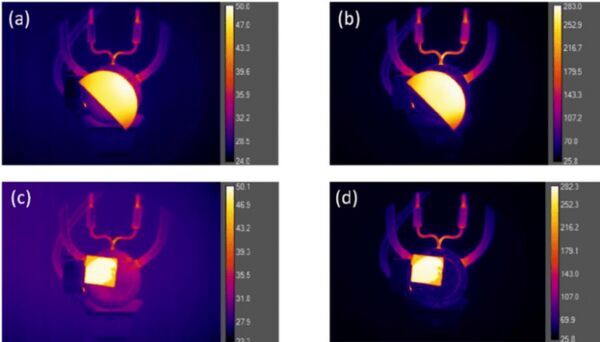
New method measures temperature within 3D objects
"University of Wisconsin–Madison engineers have made it possible to remotely determine the temperature beneath the surface of certain materials using a new technique they call depth thermography. The method may be useful in applications where traditional temperature probes won’t work, like monitoring semiconductor performance or next-generation nuclear reactors. Many temperature sensors measure thermal radiation, most of which is in the infrared spectrum, coming off the surface of an object. The hotter the object, the more radiation it emits, which is the basis for gadgets like thermal imaging cameras. Depth thermography, however, goes beyond the surface and works with a certain class of materials that are partially transparent to infrared radiation. “We can measure the spectrum of thermal radiation emitted from the object and use a sophisticated algorithm to infer the temperature not just on the surface, but also underneath the surface, tens to hundreds of microns in,” says Mikhail Kats, a UW–Madison professor of electrical and computer engineering." [...]
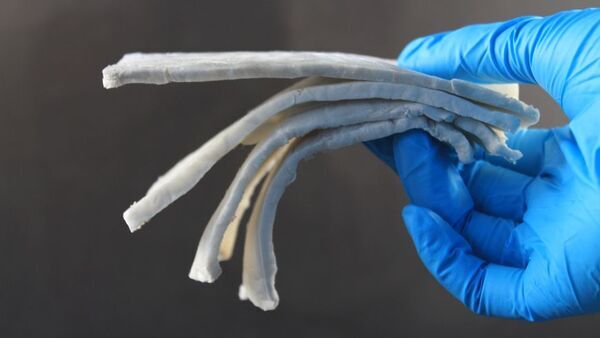
The world's lightest shielding material
"Empa researchers have succeeded in applying aerogels to microelectronics: Aerogels based on cellulose nanofibers can effectively shield electromagnetic radiation over a wide frequency range – and they are unrivalled in terms of weight. Electric motors and electronic devices generate electromagnetic fields that sometimes have to be shielded in order not to affect neighboring electronic components or the transmission of signals. High-frequency electromagnetic fields can only be shielded with conductive shells that are closed on all sides. Often thin metal sheets or metallized foils are used for this purpose. However, for many applications such a shield is too heavy or too poorly adaptable to the given geometry. The ideal solution would be a light, flexible and durable material with extremely high shielding effectiveness." [...]
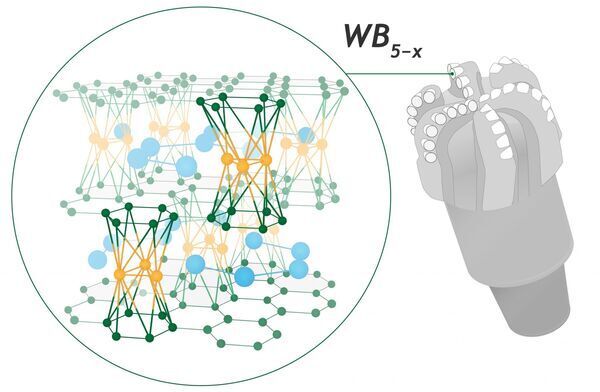
Skoltech researchers solve a 60-year-old puzzle about a superhard material
"Skoltech researchers together with their industrial colleagues and academic partners have cracked a 1960s puzzle about the crystal structure of a superhard tungsten boride that can be extremely useful in various industrial applications, including drilling technology. The research, supported by Gazpromneft Science & Technology Center, was published in the journal Advanced Science. Tungsten borides first captured the imagination of scientists in mid-twentieth century due to their hardness and other fascinating mechanical properties. One long-standing puzzle has been the crystal structure of the highest W-B phases, the so-called “WB4”, which varied wildly between experimental models and theoretical predictions. In 2017, Andrei Osiptsov and Artem R. Oganov at Skoltech proposed an idea to search for superhard materials to be used for producing composite cutters installed on bits, which are used for drilling oil and gas wells. The idea was well received by Gazpromneft STC LLC, and the collaboration began between the company, Skoltech, and the Vereshchagin Institute for High Pressure Physics of the RAS." [...]
Samsung Leads Semiconductor Paradigm Shift with New Material Discovery
"Researchers at the Samsung Advanced Institute of Technology (SAIT) have unveiled the discovery of a new material, called amorphous boron nitride (a-BN), in collaboration with Ulsan National Institute of Science and Technology (UNIST) and the University of Cambridge. Published in the journal Nature, the study has the potential to accelerate the advent of the next generation of semiconductors. 2D Materials – The Key to Overcoming Scalability Challenges Recently, SAIT has been working on the research and development of two-dimensional (2D) materials – crystalline materials with a single layer of atoms. Specifically, the institute has been working on the research and development of graphene, and has achieved groundbreaking research outcomes in this area such as the development of a new graphene transistor as well as a novel method of producing large-area, single-crystal wafer-scale graphene. In addition to researching and developing graphene, SAIT has been working to accelerate the material’s commercialization. “To enhance the compatibility of graphene with silicon-based semiconductor processes, wafer-scale graphene growth on semiconductor substrates should be implemented at a temperature lower than 400°C.” said Hyeon-Jin Shin, a graphene project leader and Principal Researcher at SAIT." [...]
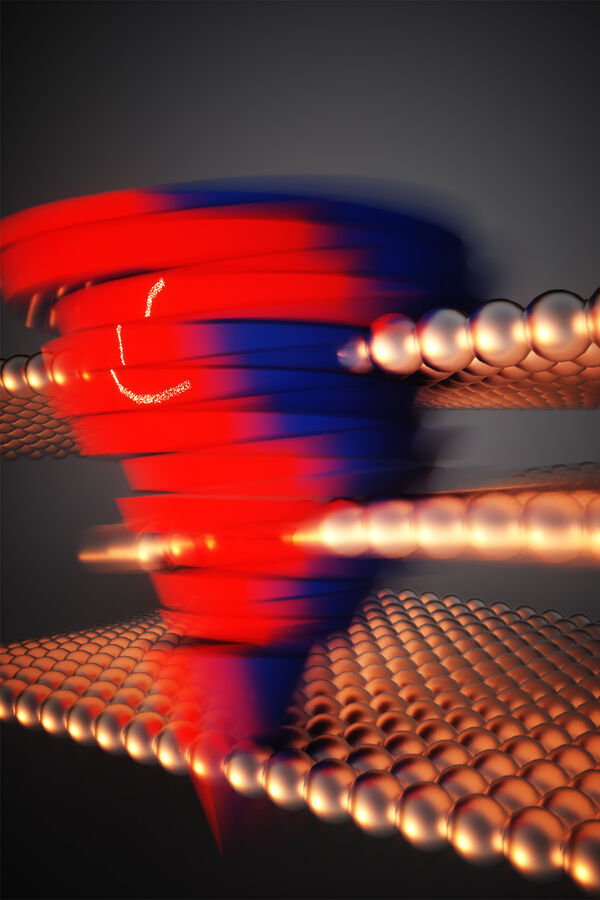
Stanford-led team shows how to store data using 2D materials instead of silicon chips
"Researchers have invented a way to slide atomically-thin layers of 2D materials over one another to store more data, in less space and using less energy. A Stanford-led team has invented a way to store data by sliding atomically thin layers of metal over one another, an approach that could pack more data into less space than silicon chips, while also using less energy. The research, led by Aaron Lindenberg, associate professor of materials science and engineering at Stanford and at the SLAC National Accelerator Laboratory, would be a significant upgrade from the type of nonvolatile memory storage that today’s computers accomplish with silicon-based technologies like flash chips. UC Berkeley mechanical engineer Xiang Zhang, Texas A&M materials scientist Xiaofeng Qian, and Stanford/SLAC Professor of Materials Science and Engineering Thomas Devereaux also helped direct the experiments, which are described in the journal Nature Physics. The breakthrough is based on a newly discovered class of metals that form incredibly thin layers, in this case just three atoms thick. The researchers stacked these layers, made from a metal known as tungsten ditelluride, like a nanoscale deck of cards." [...]
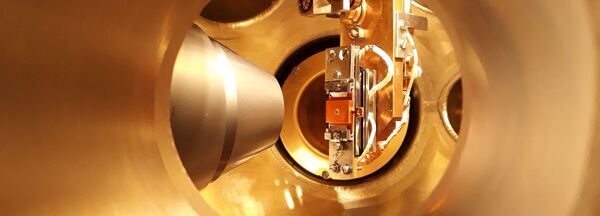
Excitation of robust materials
"Kiel physics team observed extremely fast electronic changes in real time in a special material class In physics, they are currently the subject of intensive research; in electronics, they could enable completely new functions. So-called topological materials are characterised by special electronic properties, which are also very robust against external perturbations. This material group also includes tungsten ditelluride. In this material, such a topologically protected state can be "broken up" using special laser pulses within a few trillionths of a second ("picoseconds") and thus change its properties. This could be a key requirement for realising extremely fast, optoelectronic switches. For the first time physicists at Kiel University (CAU), in cooperation with researchers at the Max Planck Institute for Chemical Physics of Solids (MPI-CPfS) in Dresden, Tsinghua University in Beijing and Shanghai Tech University, have been able to observe changes to the electronic properties of this material in experiments in real-time." [...]
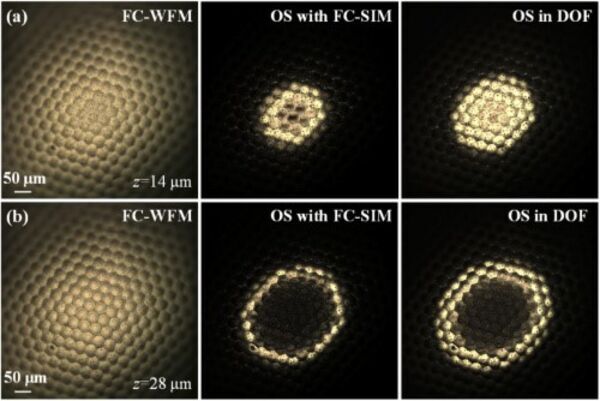
Researchers Directly Obtain 3D Full-color Images upon Conventional Microscope
"Conventional wide-field microscopy (WFM) cannot provide optical sectioning (OS) images that are required for 3D volumetric reconstruction. The reason lies in the fact that the out-of-focus signals are always coupled within the in-focus plane. By introducing structured illumination microscopy (SIM), researchers have achieved removing the out-of-focus components from the in-focus plane in full color (FC). However, the current FC-SIM approach needs three phase-shifted raw images for each focused plane and hundreds of axial-scanned planes. This approach causes a significant number of raw images and thus putting a heavy burden on data storage and processing time cost. How to release such a burden is still a question." [...]
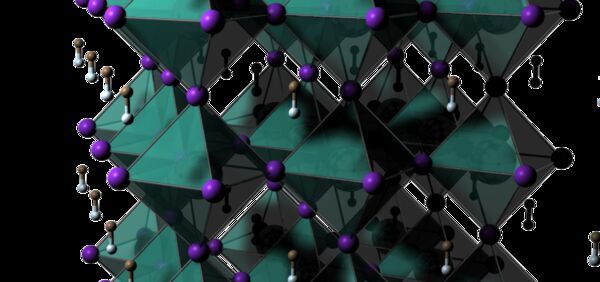
Crystal structure discovered almost 200 years ago could hold key to solar cell revolution
"Solar energy researchers at Oregon State University are shining their scientific spotlight on materials with a crystal structure discovered nearly two centuries ago. Not all materials with the structure, known as perovskites, are semiconductors. But perovskites based on a metal and a halogen are, and they hold tremendous potential as photovoltaic cells that could be much less expensive to make than the silicon-based cells that have owned the market since its inception in the 1950s. Enough potential, researchers say, to perhaps someday carve significantly into fossil fuels’ share of the energy sector. John Labram of the OSU College of Engineering is the corresponding author on two recent papers on perovskite stability, in Communications Physics and the Journal of Physical Chemistry Letters, and also contributed to a paper published today in Science. The study in Science, led by researchers at the University of Oxford, revealed that a molecular additive – a salt based on the organic compound piperidine – greatly improves the longevity of perovskite solar cells." [...]
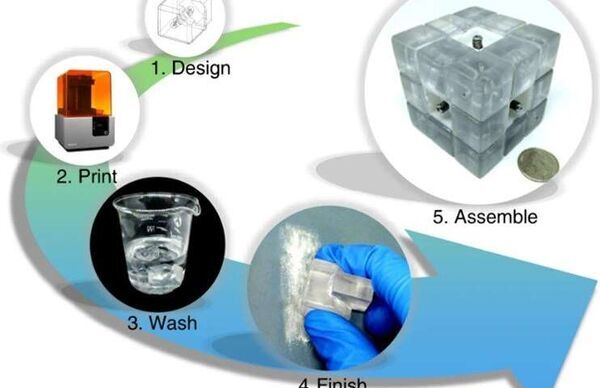
A Rubik's microfluidic cube
"Scientists have recently engineered a modular system based on the Rubik's cube to design and reconfigure microfluidic systems. Research teams had previously pursued the arrangement of microfluidic blocks in diverse conformations to suit varied experiments. In this work, Xiaochen Lai and a team of scientists at the Tianjin University in China were inspired by the popular Rubik's puzzle to build a three-dimensional (3-D) microfluidic system. The setup could be easily twisted and turned to change its function. They mimicked the design of the Rubik's cube with modular pieces containing microchannel layouts to achieve a tight, leak-proof seal relative to device arrangement. Lai et al." [...]
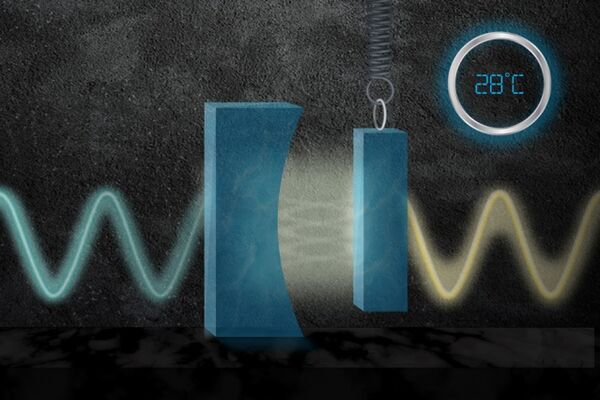
Portable system boosts laser precision, at room temperature
"“Light squeezer” reduces quantum noise in lasers, could enhance quantum computing and gravitational-wave detection. Physicists at MIT have designed a quantum “light squeezer” that reduces quantum noise in an incoming laser beam by 15 percent. It is the first system of its kind to work at room temperature, making it amenable to a compact, portable setup that may be added to high-precision experiments to improve laser measurements where quantum noise is a limiting factor. The heart of the new squeezer is a marble-sized optical cavity, housed in a vacuum chamber and containing two mirrors, one of which is smaller than the diameter of a human hair. The larger mirror stands stationary while the other is movable, suspended by a spring-like cantilever. The shape and makeup of this second “nanomechanical” mirror is the key to the system’s ability to work at room temperature." [...]
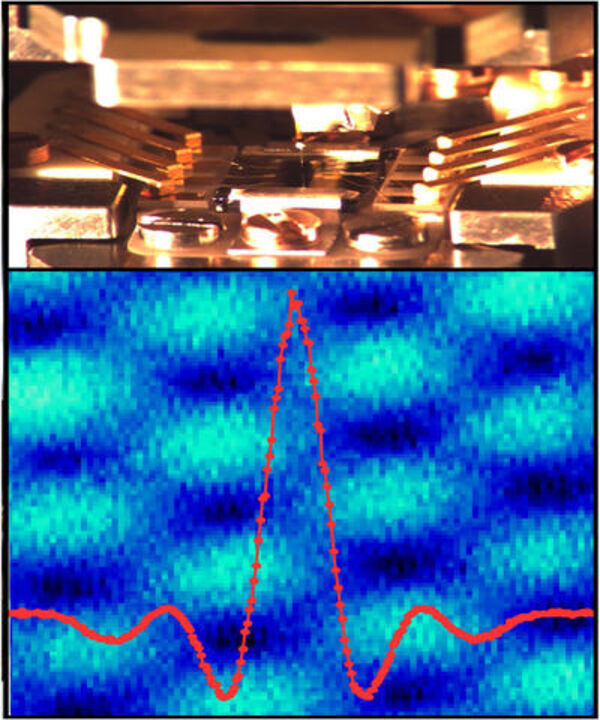
Atomic ‘Swiss Army Knife’ Precisely Measures Materials for Quantum Computers
"NIST unveils blueprint for building a three-in-one measurement tool to study quantum materials. It images single atoms. It maps atomic-scale hills and valleys on metal and insulating surfaces. And it records the flow of current across atom-thin materials subject to giant magnetic fields. Scientists at the National Institute of Standards and Technology (NIST) have developed a novel instrument that can make three kinds of atom-scale measurements simultaneously. Together, these measurements can uncover new knowledge about a wide range of special materials that are crucial for developing the next generation of quantum computers, communications and a host of other applications." [...]
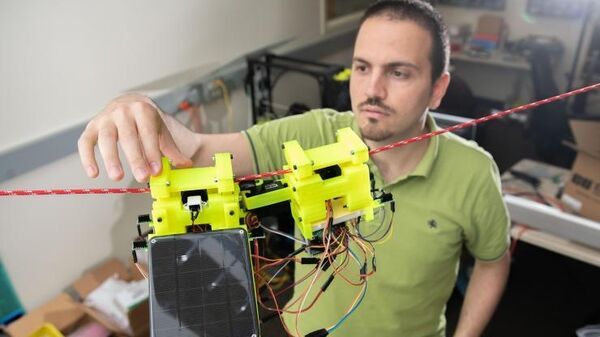
Slothbot Takes a Leisurely Approach to Environmental Monitoring
"For environmental monitoring, precision agriculture, infrastructure maintenance and certain security applications, slow and energy efficient can be better than fast and always needing a recharge. That’s where “SlothBot” comes in. Powered by a pair of photovoltaic panels and designed to linger in the forest canopy continuously for months, SlothBot moves only when it must to measure environmental changes – such as weather and chemical factors in the environment – that can be observed only with a long-term presence. The proof-of-concept hyper-efficient robot, described May 21 at the International Conference on Robotics and Automation (ICRA) in Montreal, may soon be hanging out among treetop cables in the Atlanta Botanical Garden. “In robotics, it seems we are always pushing for faster, more agile and more extreme robots,” said Magnus Egerstedt, the Steve W. Chaddick School Chair of the School of Electrical and Computer Engineering at the Georgia Institute of Technology and principal investigator for Slothbot. “But there are many applications where there is no need to be fast." [...]
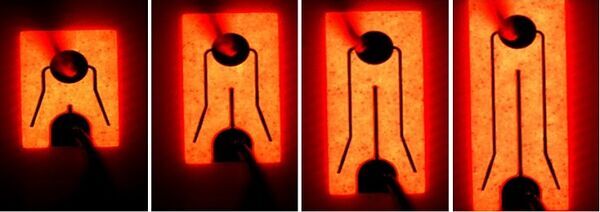
Red-light LEDs for next-generation displays
"Novel red LEDs are more temperature stable than those made using the conventional semiconductor of choice. In efforts to optimize the performance of light-emitting diodes (LEDs), KAUST researchers are looking at every aspect of the design, fabrication and operation of these devices. Now, they have succeeded in fabricating red LEDs, based on the naturally blue-emitting semiconductor indium gallium nitride, that are as stable as those based on indium gallium phosphide. LEDs are optical sources made from semiconductors that offer improvements on conventional visible-light sources in terms of energy saving, smaller size and longer lifetimes. LEDs can emit across the spectrum, from the ultraviolet to blue (B), green (G), red (R) and into the infrared. And arrays of tiny RGB devices, so-called micro-LEDs, can be used to make vivid-color displays, which could underpin the next generation of monitors and televisions." [...]
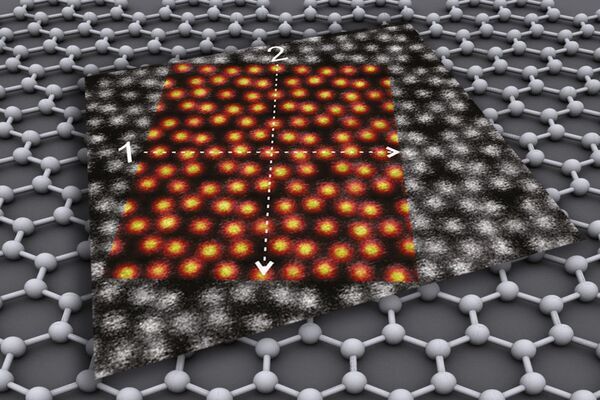
Graphene: It is all about the toppings
"To fully exploit the potential of the “wonder material” graphene, it has to be combined with other materials. A new study investigates what is important for this. Graphene consists of a single layer of carbon atoms. Exceptional electronic, thermal, mechanical and optical properties have made graphene one of the most studied materials at the moment. For many applications in electronics and energy technology, however, graphene must be combined with other materials: Since graphene is so thin, its properties drastically change when other materials are brought into direct contact with it. However, combining graphene with other materials at the molecular level is difficult: The way graphene interacts with other materials depends not only on which material you choose, but also on how these materials are brought into contact with the graphene." [...]
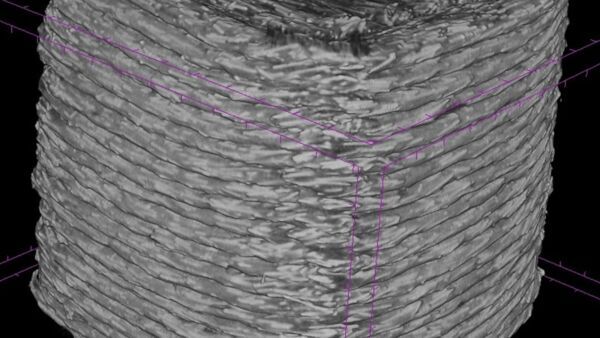
Reverse engineering of 3D-printed parts by machine learning reveals security vulnerabilities
"Machine learning can make reverse engineering of complex composite material parts easy Over the past 30 years, the use of glass- and carbon- fiber reinforced composites in aerospace and other high-performance applications has soared along with the broad industrial adoption of composite materials. Key to the strength and versatility of these hybrid, layered materials in high-performance applications is the orientation of fibers in each layer. Recent innovations in additive manufacturing (3D printing) have made it possible to finetune this factor, thanks to the ability to include within the CAD file discrete printer-head orientation instructions for each layer of the component being printed, thereby optimizing strength, flexibility, and durability for specific uses of the part. These 3D-printing toolpaths (a series of coordinated locations a tool will follow) in CAD file instructions are therefore a valuable trade secret for the manufacturers. However, a team of researchers from NYU Tandon School of Engineering led by Nikhil Gupta, a professor in the Department of Mechanical and Aerospace Engineering showed that these toolpaths are also easy to reproduce — and therefore steal — with machine learning (ML) tools applied to the microstructures of the part obtained by a CT scan. Their research, Reverse engineering of additive manufactured composite part by toolpath reconstruction using imaging and machine learning, published in Composites Science and Technology, demonstrates this method of reverse engineering of a 3D-printed glass-fiber reinforced polymer filament that, when 3D-printed, has a dimensional accuracy within one-third of 1% of the original part." [...]
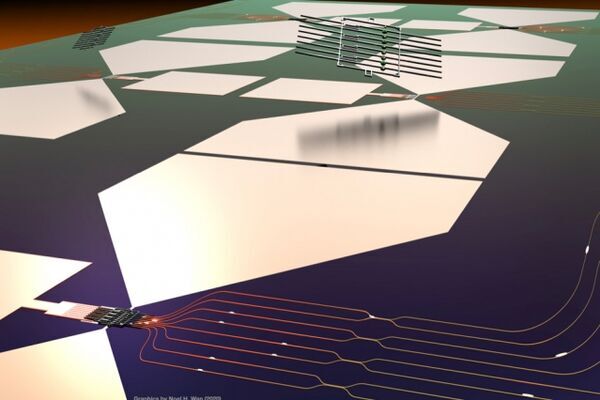
Scaling up the quantum chip
"MIT engineers develop a hybrid process that connects photonics with “artificial atoms,” to produce the largest quantum chip of its type. MIT researchers have developed a process to manufacture and integrate “artificial atoms,” created by atomic-scale defects in microscopically thin slices of diamond, with photonic circuitry, producing the largest quantum chip of its type. The accomplishment “marks a turning point” in the field of scalable quantum processors, says Dirk Englund, an associate professor in MIT’s Department of Electrical Engineering and Computer Science. Millions of quantum processors will be needed to build quantum computers, and the new research demonstrates a viable way to scale up processor production, he and his colleagues note. Unlike classical computers, which process and store information using bits represented by either 0s and 1s, quantum computers operate using quantum bits, or qubits, which can represent 0, 1, or both at the same time. This strange property allows quantum computers to simultaneously perform multiple calculations, solving problems that would be intractable for classical computers." [...]
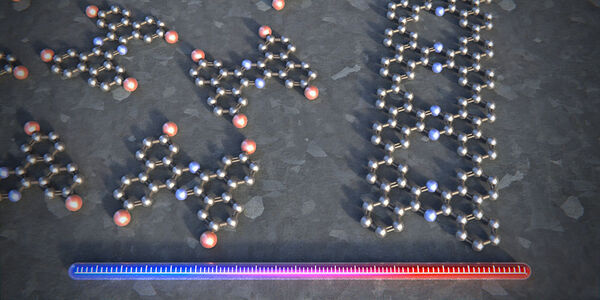
Porous nitrogen-doped graphene ribbons for future electronics
"A team of physicists and chemists has produced the first porous graphene ribbons in which specific carbon atoms in the crystal lattice are replaced with nitrogen atoms. These ribbons have semiconducting properties that make them attractive for applications in electronics and quantum computing, as reported by researchers from the Universities of Basel, Bern, Lancaster and Warwick in the Journal of the American Chemical Society. Graphene consists of a single layer of carbon atoms arranged in a honeycomb structure. The material is of interest not only in basic research but also for various applications given to its unique properties, which include excellent electrical conductivity as well as astonishing strength and rigidity. Research teams around the world are working to further expand these characteristics by substituting carbon atoms in the crystal lattice with atoms of different elements. Moreover, the electric and magnetic properties can also be modified by the formation of pores in the lattice." [...]

Rock ‘n’ Control
"Göttingen Physicists use oscillations of atoms to control a phase transition The goal of “Femtochemistry” is to film and control chemical reactions with short flashes of light. Using consecutive laser pulses, atomic bonds can be excited precisely and broken as desired. So far, this has been demonstrated for selected molecules. Researchers at the University of Göttingen and the Max Planck Institute for Biophysical Chemistry have now succeeded in transferring this principle to a solid, controlling its crystal structure on the surface. The results have been published in the journal Nature. The team, led by Jan Gerrit Horstmann and Professor Claus Ropers, evaporated an extremely thin layer of indium onto a silicon crystal and then cooled the crystal down to -220 degrees Celsius." [...]

The Spin State Story: Observation of the Quantum Spin Liquid State in Novel Material
"New insight into the spin behavior in an exotic state of matter puts us closer to next-generation spintronic devices The quantum spin liquid (QSL) state is an exotic state of matter where the spin of electrons, which generally exhibits order at low temperatures, remains disordered. Now, scientists from Tokyo University of Science, Japan, have developed a new material where a two-dimensional QSL state can be experimentally observed, advancing our knowledge of spin behavior, and getting us closer to next-generation "spintronic" devices. Aside from the deep understanding of the natural world that quantum physics theory offers, scientists worldwide are working tirelessly to bring forth a technological revolution by leveraging this newfound knowledge in engineering applications. Spintronics is an emerging field that aims to surpass the limits of traditional electronics by using the spin of electrons, which can be roughly seen as their angular rotation, as a means to transmit information. But the design of devices that can operate using spin is extremely challenging and requires the use of new materials in exotic states-even some that scientists do not fully understand and have not experimentally observed yet. In a recent study published in Nature Communications, scientists from the Department of Applied Physics at Tokyo University of Science, Japan, describe a newly synthesized compound with the formula KCu6AlBiO4(SO4)5Cl that may be key in understanding the elusive "quantum spin liquid (QSL)" state." [...]
Silicon-germanium photo-receiver for mainstream telecom-waveband networks on a chip
"Researchers at C2N, in co-operation with CEA LETI and STMicroelectronics, have demonstrated a power-efficient and high-speed silicon-germanium avalanche photo-receiver. The device is fully compatible with accessible semiconductor technology and fiber-optic links operated at telecom waveband standard. Owing to its low-cost, high-yield, and dense integration ability, silicon nanophotonics is a good candidate to tackle the needs of exponentially growing communications in data centers, high-performance computers, and cloud services. To this end, a great number of nanophotonic functions are now available on a single chip, as they take advantages of silicon-foundry process maturity. Among these different functions, optical photodetectors have been at the forefront of research interest since the early days of integrated nanophotonics. To date, most photodetectors make use of crystalline semiconductors from III-V and group-IV material classes to build optical receivers as those materials are broadly harnessed by microelectronic industry." [...]
2D Semiconductors Found to Be Close-To-Ideal Fractional Quantum Hall Platform
"Columbia researchers first to discover a quantum fluid—fractional quantum Hall states, one of the most delicate phases of matter—in a monolayer 2D semiconductor; finding could provide a unique test platform for future applications in quantum computing Columbia University researchers report that they have observed a quantum fluid known as the fractional quantum Hall states (FQHS), one of the most delicate phases of matter, for the first time in a monolayer 2D semiconductor. Their findings demonstrate the excellent intrinsic quality of 2D semiconductors and establish them as a unique test platform for future applications in quantum computing. The study was published online today in Nature Nanotechnology. “We were very surprised to observe this state in 2D semiconductors because it has generally been assumed that they are too dirty and disordered to host this effect,” says Cory Dean, professor of physics at Columbia University. “Moreover, the FQHS sequence in our experiment reveals unexpected and interesting new behavior that we’ve never seen before, and in fact suggests that 2D semiconductors are close-to-ideal platforms to study FQHS further.” The fractional quantum Hall state is a collective phenomenon that comes about when researchers confine electrons to move in a thin two-dimensional plane, and subject them to large magnetic fields. First discovered in 1982, the fractional quantum Hall effect has been studied for more than 40 years, yet many fundamental questions still remain." [...]
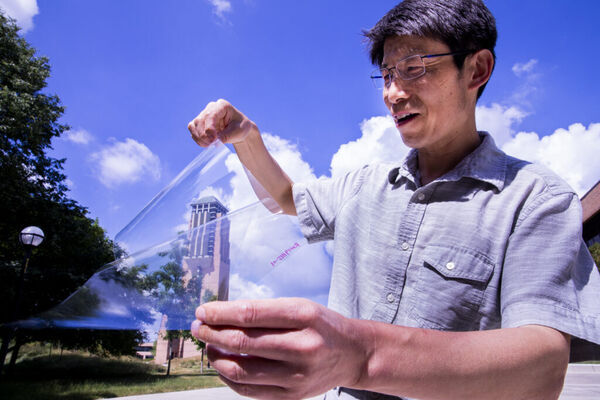
Making plastic more transparent while also adding electrical conductivity
"n an effort to improve large touchscreens, LED light panels and window-mounted infrared solar cells, researchers at the University of Michigan have made plastic conductive while also making it more transparent. They provide a recipe to help other researchers find the best balance between conductivity and transparency by creating a three-layer anti-reflection surface. The conductive metal layer is sandwiched between two “dielectric” materials that allow light to pass through easily. The dielectrics reduce the reflection from both the plastic and metal layer between them. “We developed a way to make coatings with high transparency and conductivity, low haze, excellent flexibility, easy fabrication and great compatibility with different surfaces,” said Jay Guo, U-M professor of electrical engineering and computer science, who led the work. Previously, Guo’s team had shown that it was possible to add a layer of metal onto a plastic sheet to make it conductive—a very thin layer of silver that, by itself, reduced the transmission of light by roughly 10%." [...]
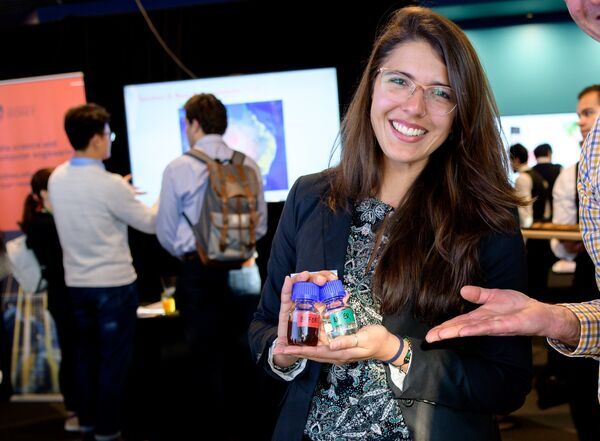
Engineers use electricity to clean up toxic water
"Powerful electrochemical process destroys water contaminants University of Sydney engineers have used electricity to clean up heavily polluted industrial wastewater. They hope the findings will help wineries, pharmaceutical manufacturers and other industries that must comply with strict wastewater regulations. A team of engineers may be one step closer to cleaning up heavily contaminated industrial wastewater streams. Researchers from the School of Chemical and Biomolecular Engineering developed an electrochemical oxidation process with the aim of cleaning up complex wastewater that contained a toxic cocktail of chemical pollutants. “Our study, published in Algal Research, involved industrial wastewater that had been heavily contaminated with a cocktail of organic and inorganic species during a biofuel production process”, said Julia Ciarlini Jungers Soares, who is completing a PhD in Chemical and Biomolecular Engineering under the supervision of Dr Alejandro Montoya. The wastewater, which contained carbon, nitrogen and phosphorus, was generated in a pilot plant, designed by the team for the production of biofuels using naturally abundant microalgae." [...]
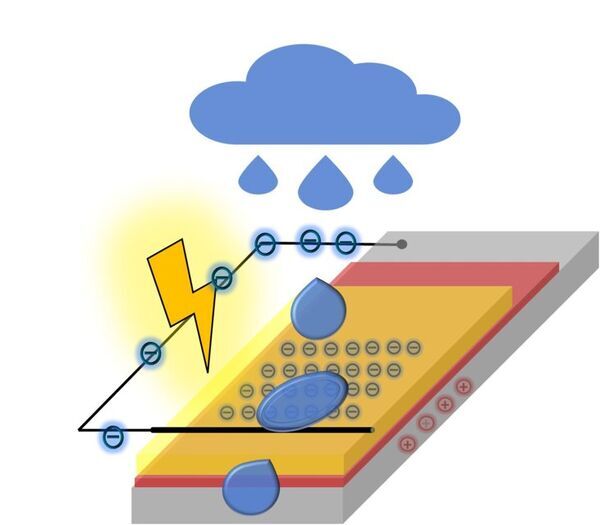
Harvesting energy from droplets
"Scientists of the University of Twente and South China Normal University designed an electrical generator that can harvest energy from impacting droplets and other sources of mechanical energy. Their paper recently appeared in Advanced Materials. Global warming is an increasing threat, demanding the utilization for renewable energy sources. Running water in the form of (rain) droplets is a ubiquitous source of mechanical energy that can be converted into electrical energy. Earlier attempts to harvest this energy using various techniques were either limited in efficiency or in stability, or required an external voltage. GENERATING A CURRENT The electrical generator can be explained as being a permanently charged capacitor, also known as an electret." [...]
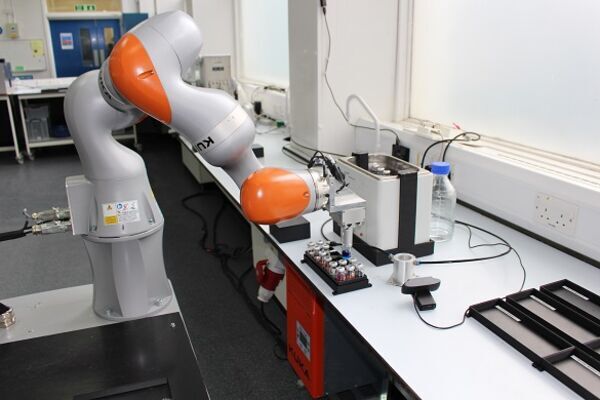
Experiment too big? Hire a mobile robot scientist
"Researchers at the University of Liverpool have built an intelligent mobile robot scientist that can work 24-7, carrying out experiments by itself. The robot scientist, the first of its kind, makes its own decisions about which chemistry experiments to perform next, and has already discovered a new catalyst. It has humanoid dimensions and works in a standard laboratory, using instruments much like a human researcher does. However, unlike a human, this 400 kg robot has infinite patience, can think in 10 dimensions, and works for 21.5 hours each day, pausing only to recharge its battery. Reported today in the journal Nature and featured on the cover, this new technology could tackle problems of a scale and complexity that are currently beyond our grasp. For example, autonomous robots could find materials for clean energy production or new drug formulations by searching vast, unexplored chemical spaces." [...]

Graphene Boosts Perovskite Single Crystal Photodetector Performance
"Due to the wide application of photodetectors in the fields including optical communication, environmental monitoring, and image sensing, the research for developing highly efficient photodetectors has attracted extensive attention over the past decades. Since 2009, methyl ammonium lead halide (CH3NH3PbX3, X=halogen) perovskites have become one of the hot topics in material science for light collection in photodetectors. At present, the performance of photodetectors based on perovskite polycrystalline thin films is still at a certain distance from the expected value. One of the main reasons is that the carrier transport at the interface is easily affected by grain boundaries and grain defects. Many research groups have tried to combine perovskite polycrystalline thin films with high-mobility two-dimensional materials to improve device performance and have achieved certain results, but the negative effects of perovskite polycrystalline grain boundaries still remain. To solve this problem, a team led by Assoc." [...]
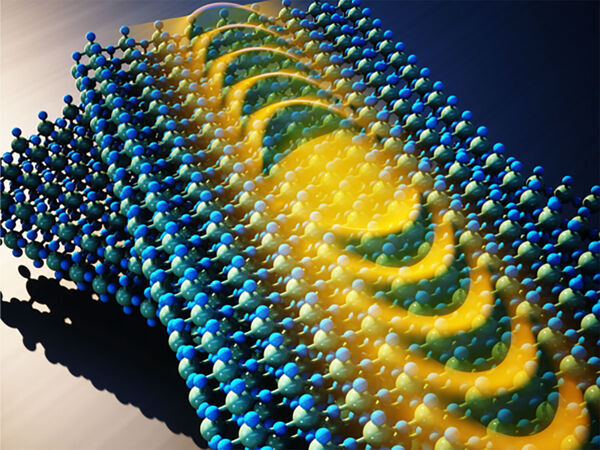
Breakthrough shows ‘magic angle’ twistronics principle can also manipulate light
"When you switch on a standard light bulb, the light from it radiates outwards in all directions in much the same way as rings form when a stone is dropped into a pond. Similarly, as the ripples on the pond become weaker the further they travel, the light produced by the bulb diminishes – or dissipates – rapidly the further it gets from the source. But in a breakthrough discovery, scientists have found that paired layers of certain ultra-thin, nanomaterials can – when twisted out of alignment in a particular way – manipulate the flow of light in extreme ways. The scientists behind the discovery say it is a major step towards developing ultra-fast nanocomputers, using narrow beams of light to compress massive processing power into a far smaller space than today’s highest capacity processors. The precise positioning of the twisted layers needed to achieve the effect varies according to the frequency of the light source used and has been dubbed by researchers the “magic angle”. In this position, the material forces the light into tightly focused and highly-controllable beams." [...]
Documentação
A documentação é parte essencial do processo de aprendizagem e a Internet além de artigos interessantes de explorar também tem alguma documentação em formato PDF interessante de ler. Todos os links aqui apresentados são para conteúdo disponibilizado livremente pelo editor do livro.
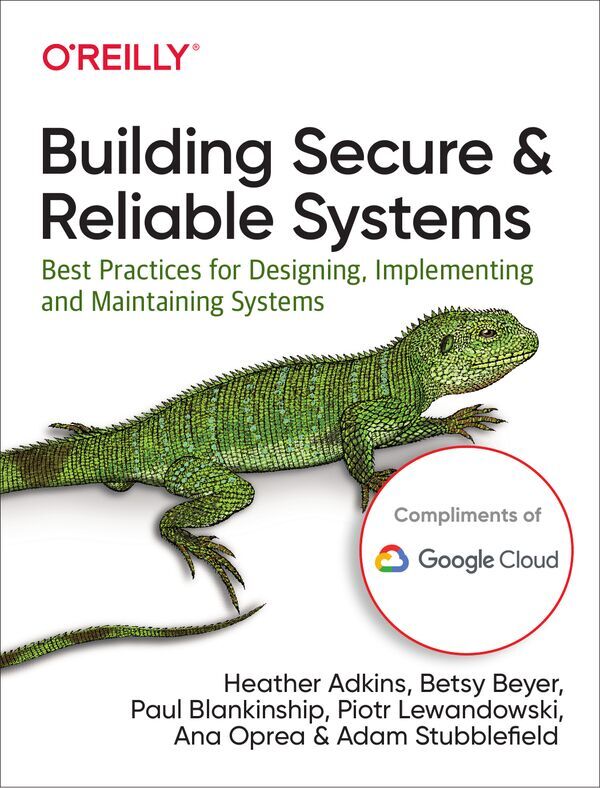
Building Secure & Reliable Systems
"Can a system be considered truly reliable if it isn't fundamentally secure? Or can it be considered secure if it's unreliable? Security is crucial to the design and operation of scalable systems in production, as it plays an important part in product quality, performance, and availability. In this book, experts from Google share best practices to help your organization design scalable and reliable systems that are fundamentally secure. Two previous O’Reilly books from Google—Site Reliability Engineering and The Site Reliability Workbook—demonstrated how and why a commitment to the entire service lifecycle enables organizations to successfully build, deploy, monitor, and maintain software systems. In this latest guide, the authors offer insights into system design, implementation, and maintenance from practitioners who specialize in security and reliability." [...]
Projetos Maker
Diversos Projetos interessantes.
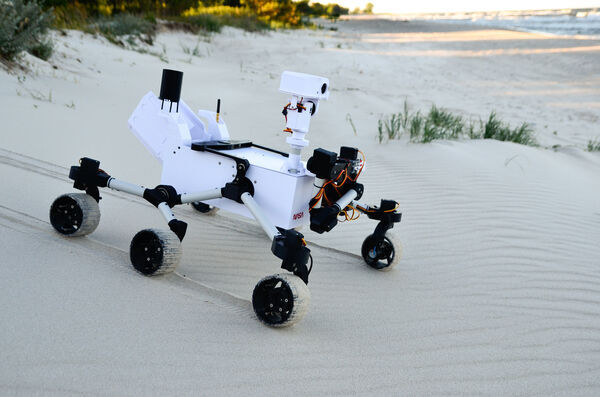
Mars Rover
"CAD model The whole Fusion 360 project can be found in the CAD folder, download the .f3z file and open it in desktop Fusion 360. Wheels There are two options for wheeles, either original Curiosity style wheels that print in one piece. Or Mars 2020 style wheels that print in two parts where outer part can be printed in flexibale plastic such as TPU. The rover_2020_wheel_flex.f3d wheels are preferred if your printer can print in TPU as they provide way more grip. Driving There are 3 ways to drive the Rover right now: LoRa Websockets Generic RC Transmitter By moving a 3 way switch on the rover, the startup mode can be choosen; WiFi station + LoRa, LoRa only or WiFi AP (when using website hosted on the Rover, see data folder). Here is my controller supporting both LoRa and websocket control of the Rover." [...]
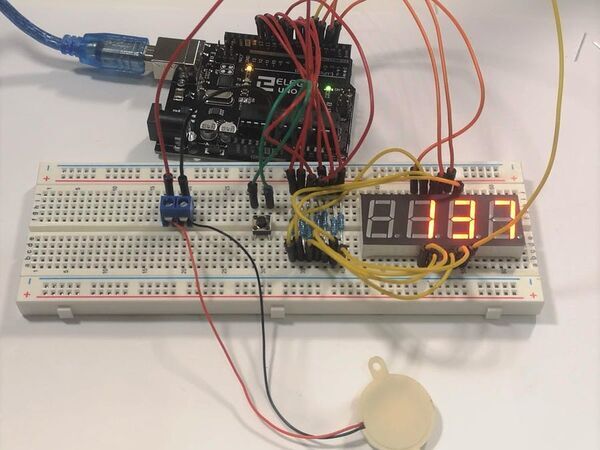
Reaction Timer Game with 4-Digit 7-Segment Display
"Here is a fun reaction timer game using a few of the parts from an Elegoo Uno Super Starter Kit. This is a fun reaction timer game using a 4 digit 7-segment LED display an Arduino and a button. Challenge yourself or your friends to beat the LOWEST reaction time. Can you go even lower?! The game starts off by flashing the high score (which is initially set to 9999). The idea is to get the LOWEST score possible by beating the previous high (low) score." [...]
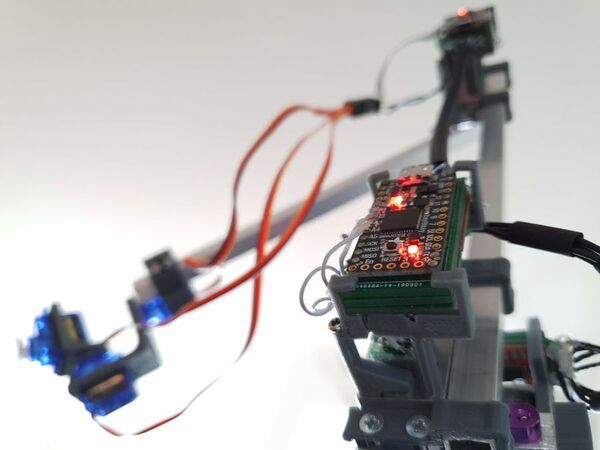
Robot Arm Built with Completely Re-made Servos
"6-axis robot arm built with hacked servos and 3D-printed parts demonstrating smooth inverse kinematic movements. This is a very long project in the making for me. You could say that it started when I ordered six endless servos in middle school, more than 15 years ago, to build a 6-axis robot arm. When I finally got them and powered them up, disappointment washed over me. They could not hold an angle... This is of course because endless servos lack feedback." [...]
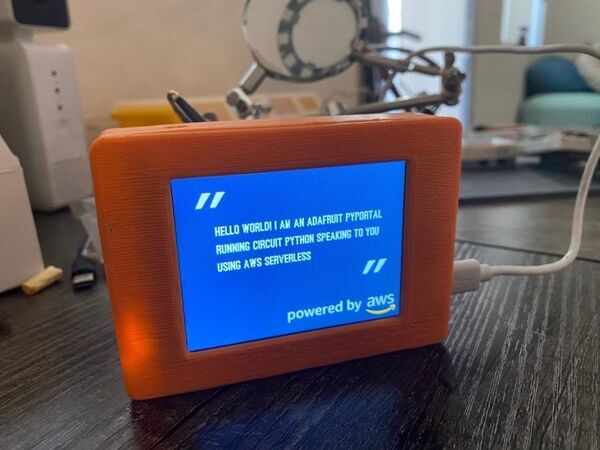
Adding Voice to a CircuitPython Project Using Amazon Polly
"Display quotes and synthesize speech on an Adafruit PyPortal using CircuitPython and AWS Serverless. As a natural means of communication, voice is a powerful way to humanize an experience. What if you could make anything talk? This guide walks through how to leverage the cloud to add voice to an off-the-shelf microcontroller. Use it to develop more advanced ideas, like a talking toaster that encourages healthy breakfast habits or a house plant that can express its needs. This project uses an Adafruit PyPortal, an open-source IoT touch display programmed using CircuitPython, a lightweight version of Python that works on embedded hardware." [...]
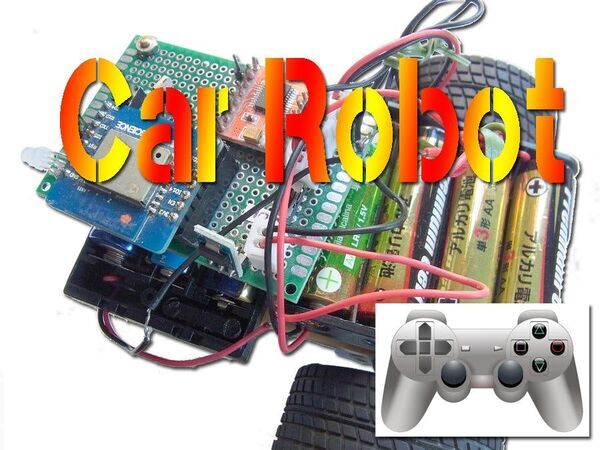
ESP8266 Car Robot controlled by Gamepad
"A simple and easy to Car Robot controlled via Gamepad using web socket technology. This project is about Wi-Fi controlled car, called Car Robot, which uses a gamepad displayed on a web browser of a mobile phone as a controller. The gamepad transmits car control data to Car Robot by web socket protocol. When the user presses buttons (e.g., stop, advance, reverse, right turn, left turn) on the gamepad, the gamepad app creates car control data by the pressed buttons. The gamepad app transmits car control data to Car Robot using web socket protocol. Car-robot app on Car Robot receives car control data then sets data to Motor Driver Module to control Car Robot." [...]

Arduino Music Notes Detector
"Detecting music notes from the audio signal is difficult to do especially on Arduino due to limited memory and processing power. Especially when the note is not a pure sine wave, which is generally the case. If we take the frequency transform of various musical instruments, it may contain multiple harmonics based on the note being played. Every instrument has its own signature combination of various harmonics. In this code, I tried to make a program that can cover as many instruments as possible. You may refer attached video in which I tried to test the various types of instruments, various types of tones generated by the keyboard, and even sound of vocal are checked." [...]
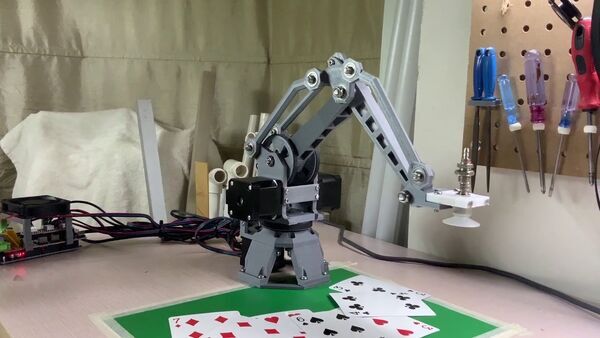
3D Printed Belt Driven Robot Arm
"3D printed robot arm running on Arduino, contributed and supported by an active community. This 3D printed robot arm featured in 20sffactory is largely based on the popular design by Florin Tobler shared on Thingiverse. His open source design kicks off a series of open source hardware & software modifications, a growing international robot maker community, and this improved version of robot arm with a refreshed design, and driven by belts with endstop calibration. Hardware & Software The robot is driven by an Arduino controller combined with other low cost standard components. The open-source designs and software empowers makers, students, educators, programmers, designers to build one affordably and make improvements according to their own needs. A basic control software is available derived from its original creator & active software development in progress." [...]
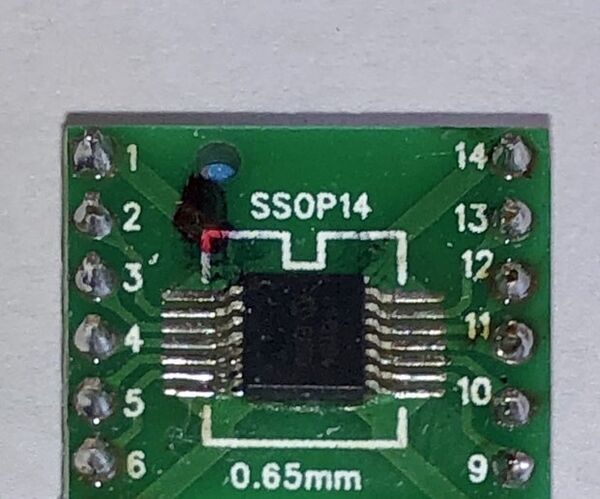
MCP41HVX1 Digital Potentiometer for Arduino
"The MCP41HVX1 family of digital potentiometers (aka DigiPots) are devices that mimic the function of an analog potentiometer and are controlled thru SPI. An example application would be replacing the volume knob on your stereo with a DigiPot that is controlled by an Arduino. This assumes that the volume control on your stereo is a potentiometer and not a rotary encoder. MCP41HVX1 are a little different then other DigiPots in that they have a split rail design. This means that while the DigiPot itself can be controlled by the output voltage of an Arduino, the signal that is passed thru the resistor network works with a far greater range of voltage (up to 36 volts). Most DigiPots that can be controlled by 5 volts are limited to 5 volts across the resistor network which restricts their usage for retrofitting an existing circuit that operates on higher voltage such as what you would find in a car or boat." [...]

YouTube Subscriber Counter
"I always wanted a YouTube Subscriber Counter that look good and clean. With the availability of e-paper displays for hobbyists like us, this idea became a reality and I've seen many people doing it, but I want to take my own approach and make the process as easy as possible for anyone that wants to build their own. PCB sponsored by PCBWay - Full feature custom PCB prototype service: https://www.pcbway.com/ It runs on AA x4 batteries and thanks to the high efficiency of the components used, it can run for many months and even years without having to replace the batteries. I include the sketch (code) file, the links to buy the parts, the STL files for 3D printing and I even include the gerber files so you can order the custom PCB to facilitate soldering the components. Code Features: It shows the amount of subscribers and views of your YouTube channel. You can select to show the complete numbers or an abbreviation (1,234 → 1.23K)." [...]
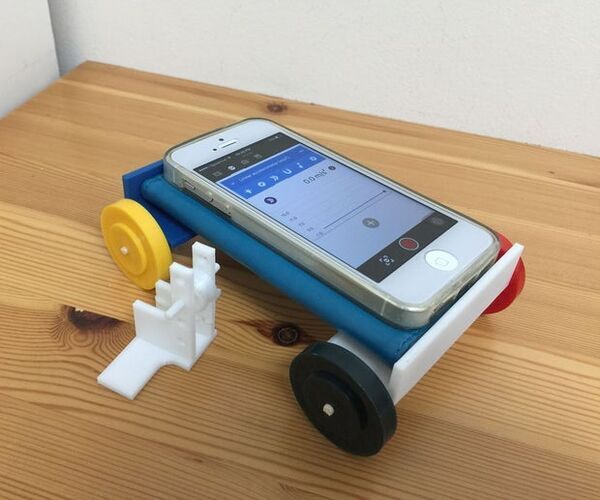
Physics Labs at Home!
"Where I live, school was suspended in March, and our classes were moved online. That was okay and everything, but when it came to science, all the labs went out the door. (Virtual labs just aren't the same, if that's what you're thinking.) So, I decided to design a few physics labs myself, and for those students who missed out on the best part of physics, I hope this Instructables assuages some of your disappointment! This lab is probably meant for grade 11 physics students, and focuses on kinematics and dynamics. We'll be exploring forces, acceleration, friction, and all that good stuff!" [...]
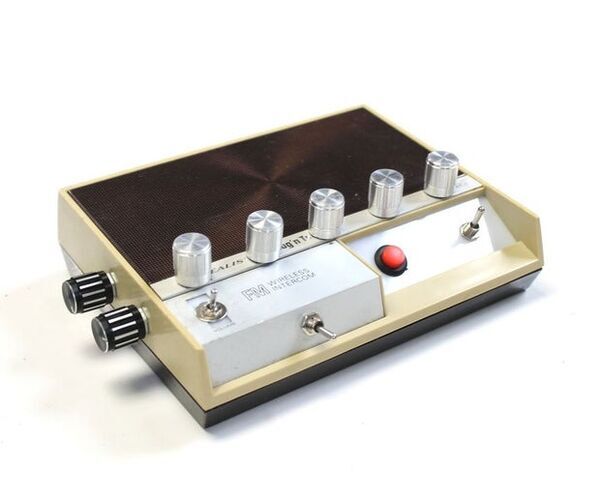
Dub Siren Synth - 555 Project V2
"My first dub siren build was a little over complicated. Although it worked well, you needed 3 x 9V batteries to power it which was overkill and I had to build the main circuit on a prototype board. The first video is a demo of the sounds that you can make with the dub siren. The second is a longer one of the build This time around I designed a PCB for the dub siren and had it printed. This saved a lot of space and pretty much removes any wiring issues. Along with the custom PCB , the dub siren also includes a echo module and a stereo module, both off the shelf." [...]
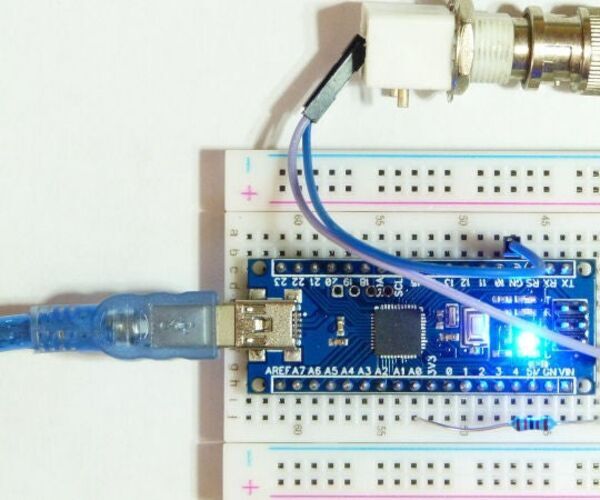
1024 Samples FFT Spectrum Analyzer Using an Atmega1284
"This relatively easy tutorial (considering the complexity of this subject matter) will show you how you can make a very simple 1024 samples spectrum analyser using an Arduino type board (1284 Narrow) and the serial plotter. Any kind of Arduino compatible board will do, but the more RAM it has, the best frequency resolution you will get. It will need more than 8 KB of RAM to compute the FFT with 1024 samples. Spectrum analysis is used to determine the main frequency components of a signal. Many sounds (like those produced by a musical instrument) are composed of a fundamental frequency and some harmonics that have a frequency that is an entire multiple of the fundamental frequency. The spectrum analyzer will show you all these spectral components." [...]
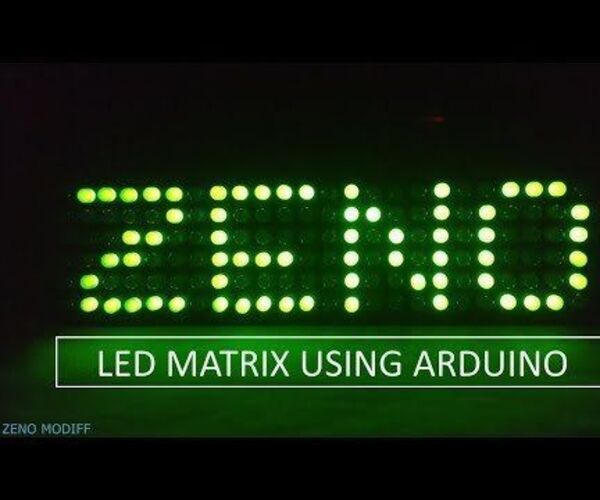
Led Matrix With Arduino
"This Is A Led Matrix Which Uses 74HC595 Shift Register & CD4017 Decade Counter , Its Very Simpe To Make This Project If You Follow My Steps Given Below I Have Simplified The Steps And Explained Everything For Better Understanding . Done With The Talking Now Now Lets Get The Show Going Parts: ARDUINO NANO 74HC595 SHIFT REGISTER CD4017 IC DEECADE COUNTER 2N3904 OR 2N2222 TRANSISTOR 220 OHM RESISTOR 5MM LED MALE HEADER FEMALE HEADER GENERAL PURPOSE DOT PCB" [...]
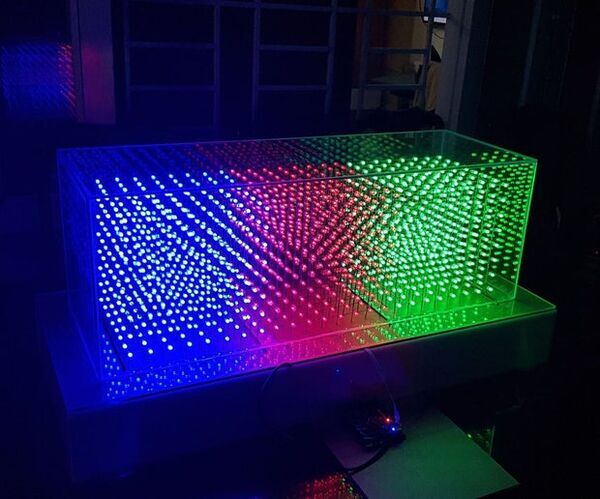
8x24x8 RED GREEN BLUE LED CUBE
"I have previously done an 8x16x8 Led Cube Clock controlled by Arduino Mega 2560 and Real Time Clock Module DS3231 more than 2 years ago and until now it still works fine. I also conducted the tests using ESP-01 to display time/ weather information on led matrix 13x15 and control an 4x4x4 RGB led cube on previous topic, named MAXIMIZE THE CAPABILITIES OF ESP-01 ESP8266. They all work very well. Today, I would like to share how to use an ESP-01S ESP8266 to control a big size - led cube 8x24x8 in the simplest way of hardware. We can easily perform many beautiful effects with smooth transistion, as well as, display time/ weather information on this led cube without any extra-components because ESP-01S ESP8266 has 1MB Flash Memory, fast CPU speed 80/160 MHz and WIFI connectivity. Lets getting started." [...]
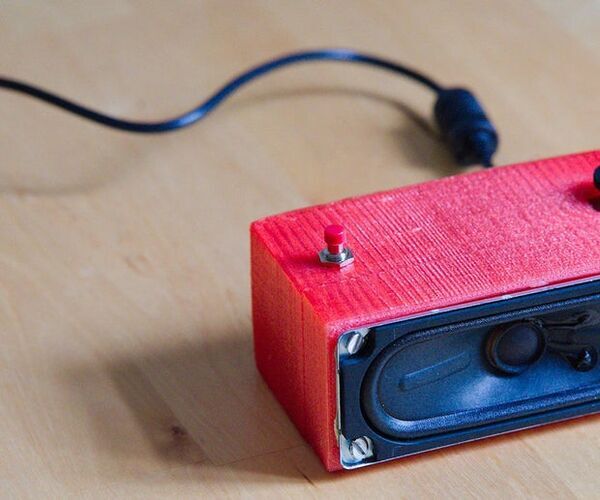
Make a Web-Radio for Less Than $15
"If you like this tutorial, please vote for it here:https://www.instructables.com/contest/audio2020/ So, I decided to do a project I've been postponing for a while:A homemade, fully functional web radio, complete with amplifier and speaker, for under 15!. You can change between predefined streaming radio stations with the push of a button and you can control volume by rotating a nice potentiometer.." [...]
Iconic CASIO F-91W Wall/Desk Size
"The Casio F-91W watch ,my favorite classic digital watch and loved by thousands around the world is becoming an iconic retro fashion. So, why do not to Super-Size it with all the functionality ?! Supplies:- HMI 7" (Nextion) -Nextion IO adapter -Arduino Mega 2560 Pro Mini (Modifying the Nextion.h Library almost any Arduino board would work too) -RTC Arduino. Real Time Clock -USB to TTL Serial converter -Buzzer -3x Led Senguins -3x TTP223 Touch Sensor -2x 20mm A3 mm black foam -3mm A4 Transparent acrylic -A4 Acetate sheet -3D Printed parts. Case, buttons and buckle -2D cut parts. Straps and free loop -Paper printed parts." [...]
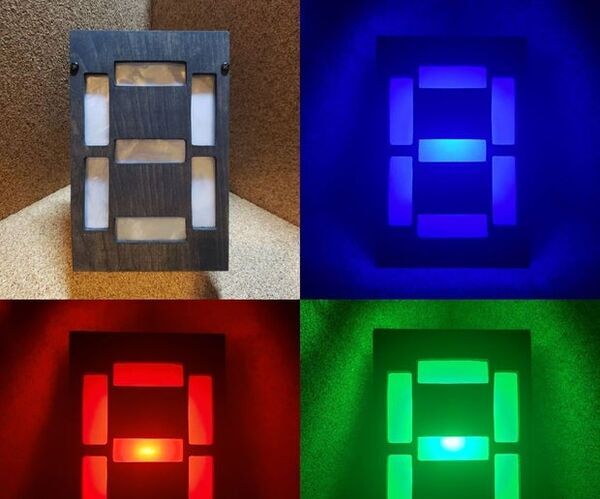
Super-Sized RGB Seven-Segment Display Lamp
"I will be showing you how I constructed my Super-Sized Seven Segment Display RGB Lamp although you probably already gathered that from the title 😄. As seen in the images above, this project will be a scaled up version of a seven segment display which is most commonly used in the vast majority of digital clocks. In the real version, each of the seven segments can be independently controlled to form the numbers zero through nine. Although these displays come in a variety of sizes, the one I modeled this project after is aproximately 1cm X 2cm. However, since this Instructable was created with the intention of being entered into the Super-Size Speed Challenge, the one we'll be constructing is approximately 13cm X 20cm. Since this project utilizes an RGB floodlight it can display a wide number of shades and brightnesses." [...]
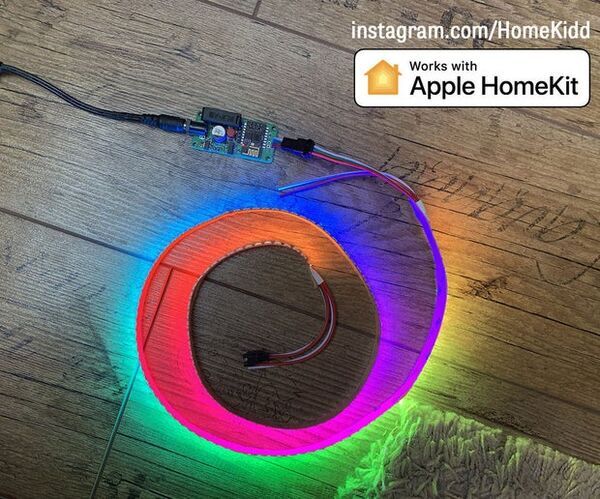
Apple HomeKit WS2812B LED Controller
"There are a lot of projects based on WS2812B LED strips out there, but most of these are using homebridge or any other solution - mostly based on MQTT - to communicate with HomeKit. Some projects are using effects via Apple HomeKit too, but none of them supports standalone HomeKit without needing any bridge I'm using WS2812B LEDs nearly 3-4 years now with HomeKit and they are working very well Since the code is very complex and i've used a lot of custom libraries I've made pre-compiled firmware files. For those who interested in making native HomeKit projects, the source code for esp-homekit available here. Basic Informations: Currently only WS2812B, WS2812B ECO and WS2813 LED strips are supported! Maximum number of LEDs are limited to 500 for saving RAM Logic Level converter required (for 3.3V to 5V data conversion) Good quality 5V power supply is necessary too More information can be find on my GitHub Adafruit Überguide can also help :-) PCB Design: I've designed a simple PCB for driving the NeoPixel LEDs the proper way described in Adafruit's NeoPixel Überguide using the latest SN74HCT125N Logic Level Converter IC and the also recommended 1000uF capacitor :-) I'm currently using this PCB with a 5V 10A power supply without any (temperature) issues :-) Also i have an USB Type-C version too for shorter LED strips! You can order the PCBs from here and here!" [...]
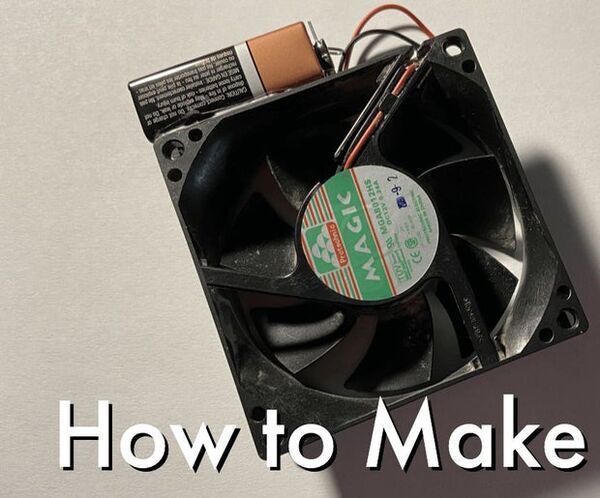
How to Make a Personal Mini Desk Fan Out of an Old Computer Fits in Your Pocket
"I'll be showing you how to make a personal mini desk fan out of an old computer. A bonus is that it even fits in your pocket. This is a very simple project, so not much experience or expertise is needed. So let's begin! Supplies: Some materials you need: A computer fan 9v battery Scissors Knife Some sort of glue Paper clips" [...]
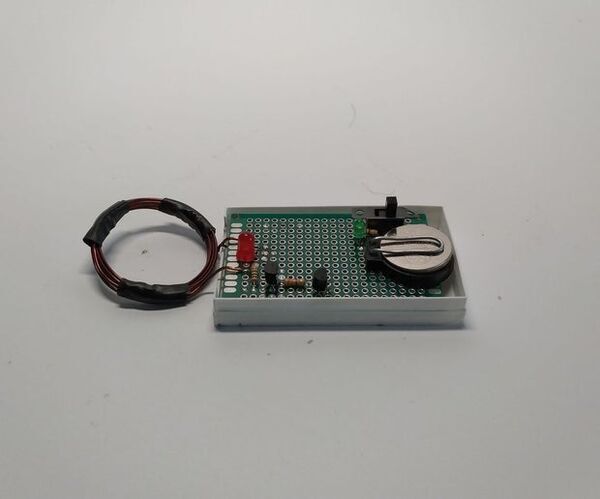
Electricity/EM Field Detector (simplest One)
"This is a simplest EM field detector you can find on the internet. I designed it myself and it's explained how it works in the next step. Basically what you will need, are two transistors some resistors, antenna for example made from a copper wire like mine, 3v coin battery, PCB, LEDs and a switch. Supplies: NPN transistor BC547 x2 100 Ω resistor x2 3.3kΩ resistor Antenna (mine is from copper wire) 3v coin battery Coin battery holder (mine is 3d printed) PCB Switch Any color led x2 optionally a cover" [...]
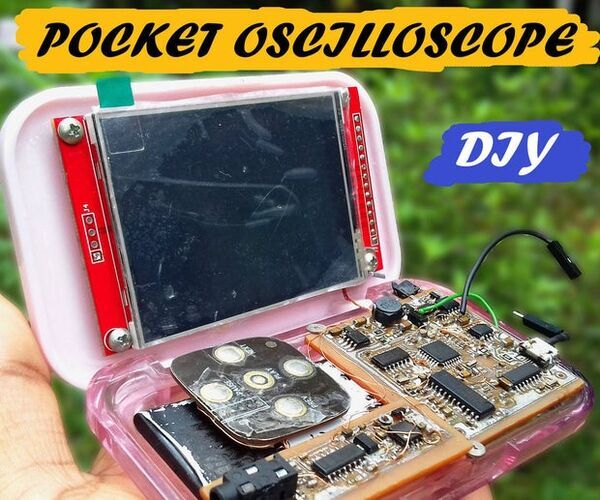
Pocket Signal Visualizer (DIY Home Made Portable Oscilloscope)
" It is basically a small scaled digital oscilloscope. It is capable of displaying all type of waveform like sine, triangular, square, etc. It's bandwidth is above 1 MHz and input impedance is about 600K. The device is mainly using the ATmega328 micro-controller as the heart and is assisted by a high performance ADC (TLC5510) which is capable of taking up-to 20 mega samples per second and thus increasing the span of bandwidth which can be analyzed by our device. In addition to that, in-order to make the device portable Li-ion battery is used , which will be suitable to be fitted into a confined space. Intelligent circuits have been designed to properly charge and to assist in intelligent discharge of the battery, which increase the battery life and also the contribute to boost up the reliability of the device." [...]
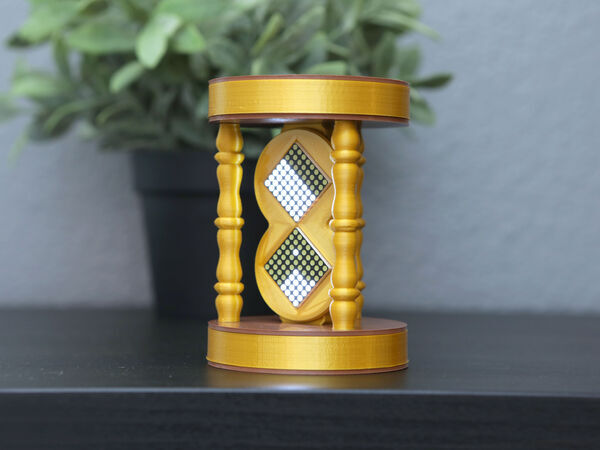
LED Matrix Hourglass
"Sand Physics Toy Build a beautiful 3D printed hourglass physics toy using LED matrices and an Adafruit Feather Sense. Use CircuitPython to simulate particle collision code on a small microcontroller packed with tons of sensors. With built-in lipo charging over USB, your projects can be small and portable! " [...]
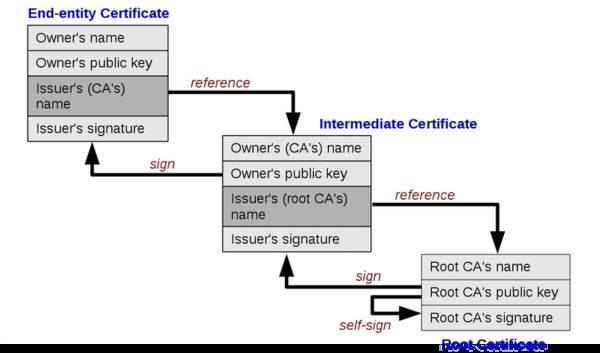
HTTPS Requests to Any URL Using the ESP8266
"Fetching or posting data to the internet is one of the core tasks of an IoT device. Doing so over HTTP is implemented quite well in the default ESP8266 Arduino libraries, but for HTTPS requests things are more difficult. In this post I will discuss the most common approaches used by the community, and develop my own method to do arbitrary HTTPS requests in a secure way. This method will not require any specific certificates or fingerprints to be manually coded in the application. HTTPS if a method to do a HTTP request over a TLS (formerly SSL) connection. By doing so, the data that is sent back and forth between your computer and the server is encrypted and protected." [...]
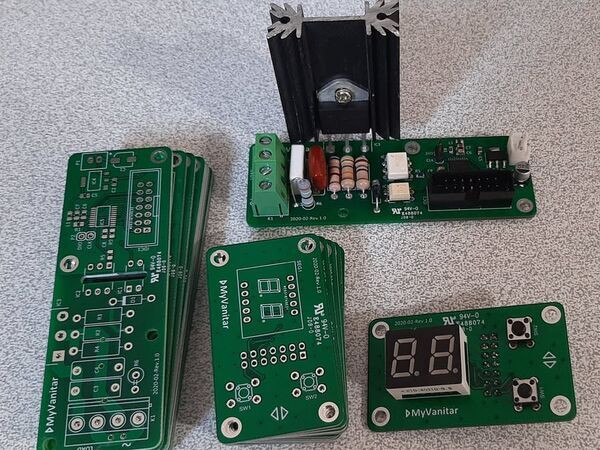
Powerful Digital AC Dimmer Using STM32
"This project is only free for personal and non-commercial use AC loads live with us! Because they are everywhere around us and at least home appliances are supplied with the mains power. Many types of industrial equipment are also powered with the single-phase 220V-AC. Therefore, we frequently face situations that we need to have full control (dimming) over an AC load, such as a lamp, an AC motor, a vacuum cleaner, a drill, … etc. We should know that controlling an AC load is not as simple as a DC load. We have to use a different electronic circuit and strategy." [...]
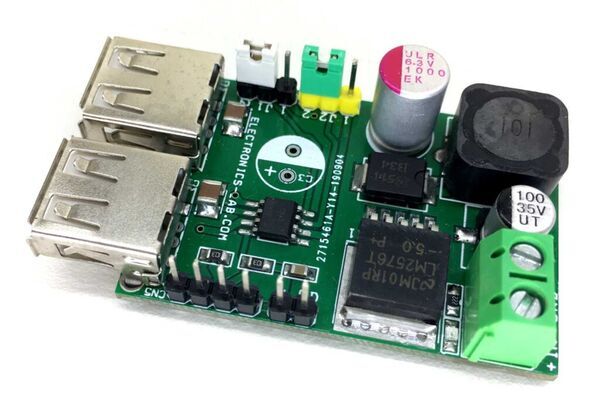
Dual USB Host/Hub Output with Constant Current Limit/Protection
"DUAL USB HOST/HUB OUTPUT WITH CONSTANT CURRENT LIMIT/PROTECTIONRajkumar Sharma 122 Views moderate Tested This project has 2 outputs that enable us to power up 2 USB devices simultaneously from an input supply of 12-30V DC. The idea of this project is to have safe power for USB powered devices. The circuit is designed to simplify USB port power delivery based on self-powering 2 port USB HOST/HUB. IC provides two constant current outputs each of 1.1Amp 5V DC, and when any of USB port is overload/short circuit, the fault flag goes from high to low, and the outputs are in constant current mode. The project can be used as a dual-port USB charger in cars or trucks. The project comprises of two parts, a DC-DC converter, and constant current limit switches." [...]
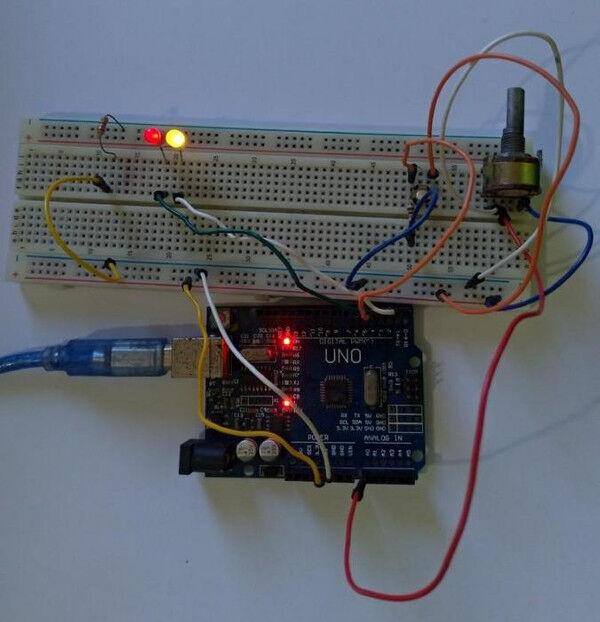
Expand your Raspberry Pi with Arduino ports
"For this project, explore Raspberry Pi port expansions using Java, serial, and Arduino. As members of the maker community, we are always looking for creative ways to use hardware and software. This time, Patrick Lima and I decided we wanted to expand the Raspberry Pi's ports using an Arduino board, so we could access more functionality and ports and add a layer of protection to the device. There are a lot of ways to use this setup, such as building a solar panel that follows the sun, a home weather station, joystick interaction, and more. We decided to start by building a dashboard that allows the following serial port interactions: Control three LEDs to turn them on and off Control three LEDs to adjust their light intensity Identify which ports are being used Show input movements on a joystick Measure temperature" [...]
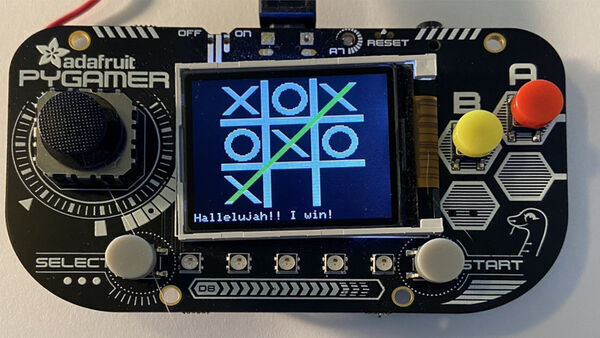
Two Player Game System for PyGamer and RFM69HCW Radio Wing
"The Adafruit PyGamer is a powerful platform for creating your own handheld games. It can be programmed in MakeCode, CircuitPython, and Arduino C++. However most of the games that have been developed for this platform have been single player games. In this guide, learn how you can attach two RF69HCW FeatherWings to the back of two PyGamer devices and use RF radio communication to construct two player games. It's all made possible by the TwoPlayerGame Library written in C++ using the Arduino IDE. The library provides you with base object classes that you can extend with your own custom classes that define the rules of your game." [...]
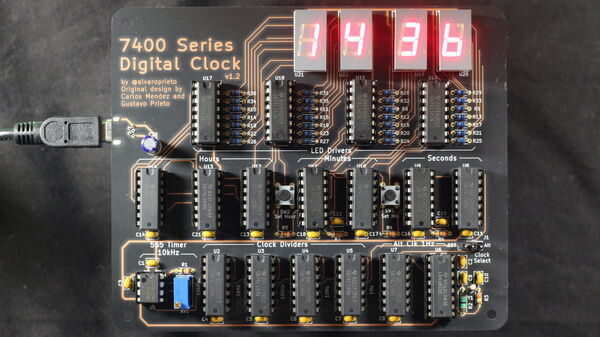
Reloj - 7400 Series Digital Clock
"This project was inspired by my dad's university digital systems project from the late 1970's. I found the writeup and schematic and decided to try and re-create it. You can see the results of the breadboard reproduction and explanations in this twitter thread. After a while, I figured it would be fun to make a soldering kit out of it, which resulted in this. " [...]
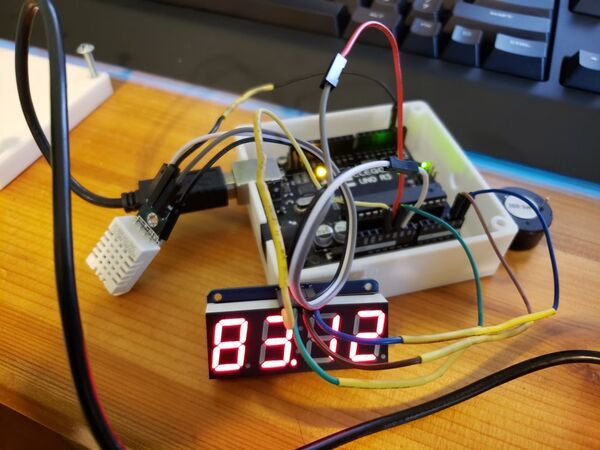
Freezer Failure Alarm
"The other day I started thinking about our chest freezer and all of the hundreds of dollars worth of food that we have in there. What if it fails and goes unnoticed for a while? The freezer is getting older. Probably around 11 years old. I would hate for all of that food to ruin. Plus that’s a lot of money to loose if it does fail." [...]
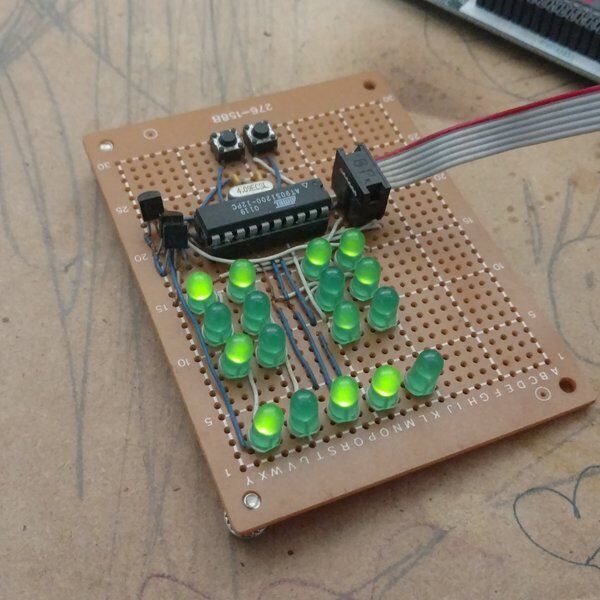
AT90S1200 Binary Clock
"A binary clock that displays hours, minutes, seconds in groups on a square grid. I wanted to build a binary clock that didn't display BCD time. So I used an obsolete even then AT90S1200 (which has to be programmed in assembler), some perfboard and some dim green LEDs to make one. This build is more than ten years old. From left to right, minutes, seconds, and hours (24 hour time) on the bottom. 1, 2 4, 8, 16, 32 minutes or seconds 1, 2, 4, 8, 16 hours." [...]
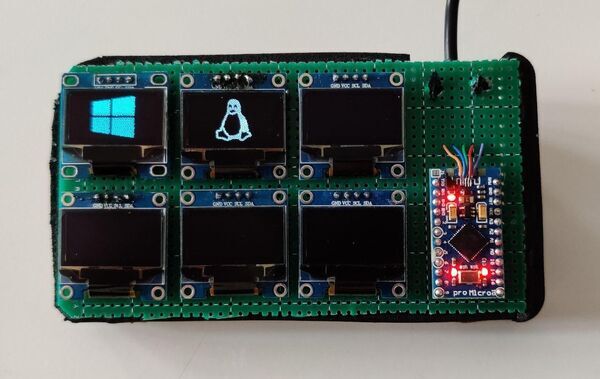
FreeDeck
"The FreeDeck aims to be a Free/OpenSource replacement for Elgatos Streamdeck and similar. It works by creating a config file with the FreeDeck Configurator, loading it onto an SDCard and inserting it into the FreeDeck. You don't need to install any software and can use it across reboots on Windows, Linux and MacOS. This was my main reason behind this gadget. This prototype is made from: Perfboard Arduino Pro Micro (32u4 16mhz 5v) 2x 4051 Multiplexer 6x ssd1306 OLEDs 6x 3x4x2mm SMD buttons SPI-SDcard Reader" [...]
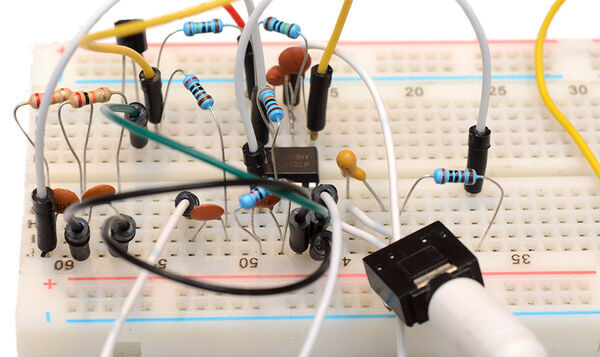
Rumbler
"This project is just for fun. One of the worst bits about the pandemic – apart from all the illness and death of course – is that with everyone stuck at home, all the advantages of living within cycling distance of central London evaporate. For the price of a reasonable dwelling elsewhere, I'm trapped in a small flat with neighbours above, below, and to the side. My neighbours are not exactly the silent type, and their incessant variety of distracting noises make it hard to focus and hard to sleep. Earplugs usually aren't enough. One technique, pioneered by the great Hunter S. Thompson, is switching your TV to some empty channel and turning up the static to drown everything else out." [...]
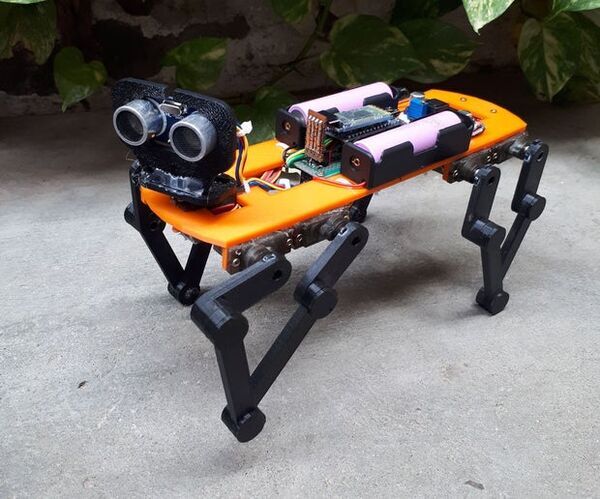
Baby MIT Cheetah Robot V2 Autonomous and RC
"Very Very Sorry Now only found the legs design in the tinkercad has problem, thanks to Mr.kjellgnilsson.kn for check and inform me. Now change the design file and upload. Kindly check and download. Those who already download and printed I am very very sorry, i never notice and dont know how it change. Actually that previous design also works but the joint is very thin and it break while fast steps. Baby MIT Cheetah Robot is the previous version of this robot." [...]
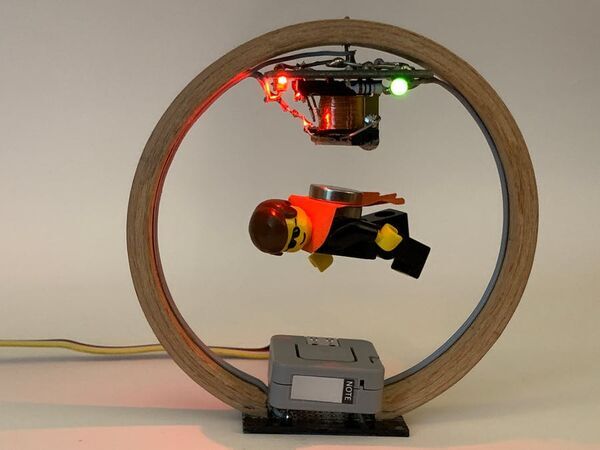
Magnetic Levitation – The Digital Way
"Magnetic-Levitation-Object with only an ESP32Pico M5Stack „ATOM LITE/MATRIX," a modified simple 5V-relais and a Hall-sensor. Magnetic-Levitation-Object with only … an ESP32Pico M5Stack „ATOM LITE“ or „ATOM MATRIX“ a modified simple 5V-relais and a HALL-sensor A1302/A1308. The wooden carrier is made of an embroidery frame. " [...]
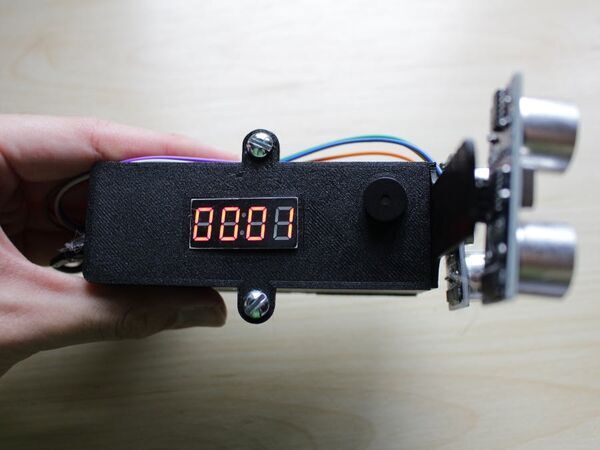
Room Occupancy Counter
"A device that keeps track of how many people enter and exit a room, and alerts them if there are too many people. With the Coronavirus pandemic still very much a problem, practicing social distancing and staying away from others is especially important. However, this is difficult to do in enclosed and crowded areas. Here is where the Room Occupancy Counter can help. It keeps track of the number of people in a room or building by increasing a counter when people enter and decreasing the counter when people leave. Once the number of people in an area surpasses the maximum number of people allowed (which can be set by the user), an alarm will go off until the number of people is within bounds again." [...]

COVID-19 Ultrasonic Distance Warning Tool
"This tool signals optically and acoustically in several stages when the minimum safety distance is undershot. The problem One of the most effective ways to prevent the spread of COVID-19 and other viral and cold diseases is to keep other people away.From my own experience I can confirm that this is not so easy outside of my own home. The best example is standing in line at the cash register or at a counter.A minimum distance of 1.5m (or more) should be maintained here. But who is walking around with a yardstick in front of them? :-) The idea There should be something that at least automatically monitors the distance of the person in front of you and raises the alarm if necessary. So what do I need?" [...]
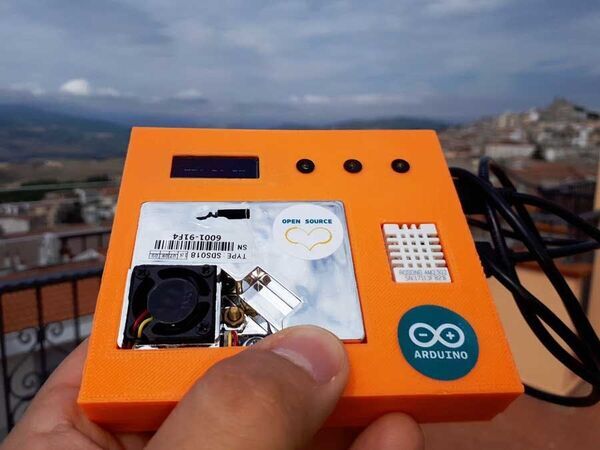
COVID-19 and PM10 Levels!
"Experimental studies would assert the possibility that PM10 may act as a “carrier” for the spreading of the viral infection of COVID-19. Experimental studies would assert the possibility that particulate matter may act as a “carrier” for the spreading of the viral infection of COVID-19. This means that the virus could be carried over longer distances by fine particles suspended in the air and could remain viable for hours, days or even weeks in tiny particles. So, air pollution particles could help coronavirus travel further in the air, increasing the number of people infected. In Northern Italy the lockdown didn’t produce a considerable reduction of particulate matter, because particulate matter is obtained in large quantity also by intensive livestock farms, besides factories and cars. So, even if during lockdown factories were closed and cars didn’t circulate, particulate matter concentration levels in Lombardy (Italy) remained high in any case, due to intensive livestock farms located in its territory that continued to produce manure, and therefore pollutants in the air, and among others, particulate matter." [...]
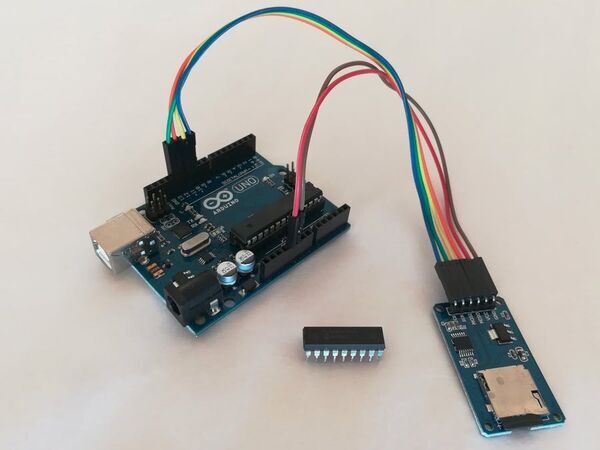
Run PICmicro Instructions on Arduino
"A lightweight simulator to run programs compiled for PICmicro on Arduino. Story μSim is a lightweight PIC™ CPU and ALU simulator. This simulator supports the PICmicro mid-range instruction set and designed to work on both PC and Arduino platforms. Compare with most of the other emulators, μSim does not provide all MCU features and peripherals. This simulator design as a minimalistic system, and based on the requirements, it can extend with additional peripherals and features. Apart from the instruction decoder, this system simulates 1024 words of flash memory, 68 bytes of SRAM, two 8 bit GPIO ports, and register map similar to PIC16F84 MCU." [...]
That's all Folks!



